#to travel around Europe and Asia for the next 3 months doing research work and visiting friends
Explore tagged Tumblr posts
Text
*
#the last two weeks have been mental#I passed in my last paper for this term on the 24th#which means I’m officially done with the first year of my PhD#and I got news yesterday that I got a high pass on my French translation exam#so I only have to take one more test (could be in Russian or Portuguese or Hebrew or Arabic. my choice based on what I already have) to#finish my language requirements#[which is one of those things that doesn’t seem like a big deal but you can’t go to prospectus defense without it done]#and to multiply the crazy#the Friday before last#I got news that a proposal is submitted to a call for chapters (which I 100% thought I would be turned down on) was accepted#so I’m going to have a whole 40-50 page research project brought out as a chapter in a book by a major U.S. university press#never mind that I’m leaving in 2 weeks#to travel around Europe and Asia for the next 3 months doing research work and visiting friends#I was at such a low point at the start of this term 2 or 3 months ago#burned out and not feeling good about my work and just generally having a time of it with everything#but it feels like everything has turned around so drastically in such a short amount of time#and pushing myself through the bad/hard parts was worth it to come out the other end#anyway I’m rambling#but it’s been amazing to get things to look forward to and move towards making real accomplishments#especially after not sleeping more than 5 hours a night for like 9 months#not the stones#me stuff
3 notes
·
View notes
Link
General Motors Rebounds From Pandemic Disruptions: Live Updates Here’s what you need to know: “GM.’s 2020 performance was remarkable by any measure,” said Mary Barra, the General Motors chief executive.Credit…Rebecca Cook/Reuters General Motors said on Wednesday that it earned $6.4 billion in 2020, a modest decline from the year before, as brisk sales of pickup trucks and sport-utility vehicles in the second half of the year offset the damage on its business caused by the pandemic in the spring. The automaker reported that revenue declined 11 percent to $122 billion from $137 billion in 2019, when it reported net income of $6.7 billion. “G.M.’s 2020 performance was remarkable by any measure, and even more so in a year when a global pandemic caused companies around the world — including G.M. — to temporarily suspend manufacturing,” Mary Barra, the company’s chief executive, said in a letter to shareholders. The pandemic forced G.M. and other automakers to close all of their North American plants for about 60 days last spring, and caused a deep drop in sales of new vehicles. Automakers also struggled in the pandemic with a shortage of semiconductors needed for features like touch screens, computerized engine controls and transmissions. New cars can have more than a hundred semiconductors. The shortage of chips is expected to last well into 2021. This led G.M. to cut its forecast for operating profit this year by $1.5 billion to $2 billion, the company said. In a conference call with reporters, Ms. Barra said G.M. was working with suppliers to ensure it had the chips it needed, and it expected to be able to make up for any lost production over the course of the year. “The semiconductor shortage won’t slow our growth plans, and without mitigation strategies we still expect to see a very good year for General Motors,” she said. “Right now, we won’t lose any production as it relates to full-size trucks and S.U.V.s throughout the year.” “Part of how United will combat global warming is embracing emerging technologies that decarbonize air travel,” said Scott Kirby, the chief executive of United Airlines.Credit…Chris Helgren/Reuters United Airlines plans to invest in and buy as many as 200 aircraft from Archer Aviation, an electric air taxi start-up that announced plans on Wednesday to go public, in a deal that Archer said valued it at about $3.8 billion. “Part of how United will combat global warming is embracing emerging technologies that decarbonize air travel,” United’s chief executive, Scott Kirby, said in a statement on Wednesday. “By working with Archer, United is showing the aviation industry that now is the time to embrace cleaner, more efficient modes of transportation.” United is investing about $20 million in Archer, and an additional $5 million will come from Mesa Airlines, which operates regional flights for United and others. The airline’s tentative aircraft order is valued at up to $1 billion, Archer said in a statement. United said it would only purchase the aircraft once they were available and had met its operating and business requirements. The aircraft, which can travel at speeds of up to 150 miles an hour for up to 60 miles, would be used within the next five years to let United’s customers commute in dense urban areas or quickly reach the airline’s airport hubs, United said. The aircraft are set to debut this year, according to Archer, which is based in California. The news follows United’s announcement late last year that it plans to become carbon-neutral by 2050, in part by investing in a “direct air capture” plant in Texas that will remove carbon dioxide from the sky and inject it underground. Archer said it planned to go public via a sale to a blank-check company, also known as a special purpose acquisition company. The combined company is expected to raise about $600 million from investors, including United, the newly formed carmaker Stellantis and others. The company expects to be listed on the New York Stock Exchange under the ticker ACHR. Copper sheathing used in undersea cables, in 2018. The metal is seen as good predictor for the direction of the global economy.Credit…Chang W. Lee/The New York Times U.S. markets Stock markets in the United States were set to open higher on Wednesday, futures markets indicated. Indexes in Europe were mixed after most Asian stocks ended the day higher. The S&P 500 pulled back from a record high on Tuesday, but futures suggest it will open 0.3 percent higher on Wednesday. It’s starting out as a calm day in markets as earnings season winds down. General Motors and Uber are scheduled to report later. Twitter’s shares rose nearly 3 percent in premarket trading after the company said on Tuesday that its revenue rose 28 percent in the fourth quarter compared with the previous year. Commodities Commodities prices rose to multiyear highs as traders anticipated stronger demand for raw materials to aid the economic recovery. West Texas Intermediate futures, the U.S. crude benchmark, gained 0.5 percent to $58.67 a barrel, the highest level since April 2019. Brent prices climbed to $61.50 a barrel, the highest since July 2019. Copper prices, which have been climbing for 10 straight months, approached an eight-year high in London trading. The metal is seen as good predictor for the direction of the global economy given its broad usage, especially for the wiring for power transmission. Europe The Stoxx Europe 600 index gained 0.5 percent, helped by advances among banking companies. Gains were led by Adyen, a Dutch payments company that handles transactions for companies including eBay. Its shares jumped 9 percent after it raised its growth expectations. Adyen’s shares were at a record high, having more than doubled over the past year. Asia Salesforce Tower in San Francisco is one of the tallest buildings on the West Coast. The company will allow more remote work long-term.Credit…Jason Henry for The New York Times Salesforce, the business software giant and San Francisco’s largest employer, said on Tuesday that it would allow most of its employees to permanently work remotely on a full- or part-time basis. The company, which has 54,000 employees, said most workers would visit the office one to three days a week for meetings and collaborative work. A small population will work from the office four or five days a week, and other Salesforce workers who don’t live nearby or need an office will be fully remote. Tech companies have been at the forefront of permanent work-from-home policies. In May, Facebook was one of the first to announce that it would allow many employees to work remotely even after the pandemic. Twitter, Coinbase, Shopify and Microsoft have followed suit. Salesforce said in December it would buy the workplace chat app Slack. Over the summer, as Salesforce and other companies toyed with the idea of returning to the office, Marc Benioff, Salesforce’s chief executive, seemed to acknowledge that office work would be permanently changed. “I just feel very strongly that we have the ability to do something very powerfully here and to motivate this new workplace, just like we did in the prior workplace,” Mr. Benioff said at the time. “Technology is actually going to become a critical part of managing our workplace, where before it was not part of our culture.” Salesforce said it planned to redesign offices to create more spaces that foster collaboration, including “café-style seating, open-air conference areas and private nooks, with an emphasis on clean desks and social distancing,” the company said in a statement. Nicolo Laurent, the chief executive of Riot Games, is the subject of an investigation by his company after a lawsuit accused him of harassment.Credit…Yicun Liu/Riot Games Riot Games, the video game publisher that produced the popular title League of Legends, said Tuesday it was investigating claims of sexual harassment and gender discrimination against its chief executive, Nicolo Laurent. Mr. Laurent and Riot were sued in Los Angeles County Superior Court in January by Sharon O’Donnell, a former executive assistant to Mr. Laurent. In court documents, Ms. O’Donnell said Mr. Laurent repeatedly made sexually suggestive remarks to her, asked her to work at his house when his wife was not home, and told women who worked for Riot that the way to handle stress related to the coronavirus pandemic was to “have kids.” “Riot Games is a male-dominated culture,” the lawsuit said. Female employees like Ms. O’Donnell were “discriminated against, harassed and treated as second-class citizens,” it said. When she refused Mr. Laurent’s advances, Ms. O’Donnell said in the lawsuit, he yelled at her, grew hostile, took away some of her responsibilities and eventually fired her in July. Ms. O’Donnell “believes that this was because she refused to have sex or an affair with the defendant,” according to the lawsuit, which was first reported on Tuesday by Daily Esports. Riot disputed Ms. O’Donnell’s claim in a statement, saying she “was dismissed from the company over seven months ago based on multiple well-documented complaints from a variety of people.” Riot said an outside law firm was conducting the investigation into Mr. Laurent and was being overseen by a committee of the company’s board of directors. Riot said Mr. Laurent was cooperating with the investigation. Riot, which is owned by the Chinese internet giant Tencent, has grown into one of the world’s most prominent video game companies. Its flagship League of Legends game, released in 2009, brought in more than $1.8 billion in revenue last year, according to an estimate from the research firm SuperData. And the series of professional competitions Riot has built around the game has attracted tens of millions of fans and turned star gamers into e-sports celebrities who can make millions of dollars. But Riot has also been under fire for what employees have said is a sexist, toxic workplace. In 2019, it agreed to pay $10 million to the 1,000 women who had worked at the company since 2014 to settle a class-action lawsuit claiming gender discrimination and unequal pay. California’s Department of Fair Employment and Housing, which has been investigating Riot since 2018, said last year that the women could be entitled to as much as $400 million, which Riot disputed. It said earlier this month that it was moving forward in court with an effort to seek “class-wide relief” for the women who worked at Riot. Aunt Jemima formally rebranded itself on Tuesday as the Pearl Milling Company, moving one step closer to permanently abandoning the breakfast product line’s likeness that critics had long said perpetuated a racist stereotype for more than a century. The new name comes from the milling company in St. Joseph, Mo., that pioneered the self-rising pancake mix that became known as Aunt Jemima. Heineken, the big brewer based in Amsterdam, said on Wednesday it would lay off 8,000 workers, or almost 10 percent of its work force, as it confronts a steep fall in beer sales to restaurants and bars closed because of the pandemic. The company reported an 18 percent drop in net revenue for 2020, and a 79 percent fall in operating profit. Dolf van den Brink, the chief executive, called it a “year of unprecedented disruption and transition.” Lyft said on Tuesday that revenue for the fourth quarter of 2020 was $570 million, a 44 percent decline from the year before but in line with Wall Street expectations. Losses increased 22 percent, to $458.2 million. Revenue for 2020 was down 35 percent, to $2.4 billion. Twitter said on Tuesday that its revenue in the fourth quarter last year was $1.29 billion, a 28 percent increase from the previous year and slightly above Wall Street expectations. Profit for the quarter was $222 million, bolstered by a turnaround in income after a significant drop in ad spending earlier in 2020. The company lost $1.14 billion for the year. Source link Orbem News #Disruptions #general #Live #Motors #Pandemic #Rebounds #Updates
0 notes
Text
These 12 freight forwarder traps you must know
When doing business with China, it’s important to note that purchasing products from China Manufacturing Companies is not the end of the line. Next comes the task of getting the product from the factory to whatever final destination you have in mind. This might sound simple enough. But when you’re dealing with international trade on an industrial scale things can become complex quickly. This is where freight forwarders come in.
Freight forwarder’s job is to move products from point A to point B by any means necessary. But this doesn’t mean that the forwarder is physically moving the goods themselves. Freight forwarders are logistics managers who arrange and oversee the transportation process. They act as a sort of travel agent for inanimate objects.
Whether you are looking to act as your own freight forwarder or hire someone to do the work for you, it’s important to understand the involved risks in the process. Shipping products internationally is a complex task that has plenty of potential risks. Don’t let your business get derailed by a simple mistake. If you watch out for these twelve freight forwarder traps then you’ll greatly increase your chances of success.
1. Incomplete bills of lading

The bill of lading is a document that carriers issue to shippers detailing exactly what is being shipped and where it is being shipped to. It’s an absolutely essential document to fill out precisely.
When an order is ready to be completed consignees are asked for the complete information of bill of lading before shipment. In addition to information about the shipped goods, the consignee must provide their ZIP code, enterprise code, or tax code. Which you need to provide will depend on the regulations of different trading countries.
Filling out a bill of lading properly is one area where an experienced freight forwarder can be a huge help. However the shipowner won’t tell you anything about complete bill of lading information you need provide. So if you don’t know what to fill in you need to find someone who knows. Making changes after the fact can be a costly process. Because all changes after the submission of supplementary materials will result in amendment fees. Things can get even worse after the delivery of the manifest, when changes may need to be approved by the port of destination. This can lead to penalties on top of the basic amendment fees. Avoid all of these issues by making sure that the bill of lading fills out correctly from the start.
2. Shipping across the month
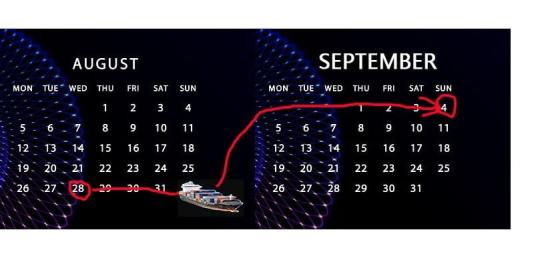
Shipping out your goods as soon as they are ready to move may seem like the obvious choice to make, but it can actually cut into your profit margins. The cost of shipping goes up and down over time according to certain patterns. It is very common for shipowners to raise prices in the beginning and middle of the month. They will reduce the price if they don’t receive goods or even they don’t receive goods well. This fact frustrates many, but if you use it to your advantage you can increase the profitability of your shipments.
Always keep an eye out for a shipping window that is as safe and affordable as possible. You can also choose different routes based on their stability. The ocean lines through the waters of Europe, the Caribbean, South America, the United States, and Canada, and parts of the Middle East tend to be more volatile. On the other hand, the waters of Southeast Asia, South Korea, Japan, and other Asia-pacific regions tend to be relatively stable.
3. Discrepancies between shipment and arrival dates

Sticking to a shipping schedule is incredibly important. If a product needs to reach its final destination as soon as possible then you shouldn’t be cutting corners and opting for the cheapest shipping method. Remember to keep the big picture in mind, late arrivals are costly in their own way.
While it can be tempting to choose the least expensive option available at any given time, it is important to look at big images. Take the example of furniture being shipped to a hotel that is about to open. The person might want to save money during the shipping process, but what if slow shipping means that the furniture will arrive at the hotel past its opening day? This has happened in the past and resulted in fees worth thousands of Australian dollars, greatly surpassing the amount that they saved in shipping time. You must always weigh the cost of shipping against the cost of a late arrival.
4. Confused subdividing ports

Ports are large and busy places. This is why you need to be precise about exactly where your goods will be within a port. It isn’t enough to simply state that a shipment might be in a port like JAKARTA, since a port like that will be packed with countless shipping containers from all across the globe. Ports are subdivided for this reason and you must always be precise about listing exactly which subdivision your shipments will be in every step of the way.
Take the port of KARACHI for example. This giant port breaks down into subdivisions with names like PICT, KICT, SAPT, and QASIM. If the correct subdivision name isn’t written down or tracked properly then shipments can get delayed or even lost directly. Small typos or disorganization can waste time and money. Don’t let this happen to you, make sure you know exactly where your shipment will be within the different ports it goes through.
5. Unrecorded container damage

Shipping containers are not disposable goods, they are designed to be used over and over again. Each time a container ships from one port to another it will take on some sort of damage. Dents, scratches, water leakage, stains, and other types of damage happen all of the type. The important thing is keeping track of these damages. So you can prove what condition the container was in when you first got your hands on it.
Photographic proof of the condition of a container is very important. Take container photos before loading as well as display the time and license plate. These photos should then be sent to the shipowner for record by the agent. This shows that you know what condition the container is in and you’ll be able to prove who is responsible for any additional damages that might occur. If you don’t take these photos then it can be argued that new damages were actually old and had simply gone unrecorded.
6. Uninsured shipments

Insurance is always a good choice. Many people think that insurance isn’t legally required then it is just an unnecessary expense that should be cut to increase profitability. But this is the epitome of short-sighted thinking.
International shipping involves risks. Even with all of the latest advancements in technology, there are still mistakes that happen which result in damaged or lost goods. If you’re operating on narrow margins then these sort of losses can be devastating. The way to mitigate these risks is by sharing the burden with an insurance company.
A secondary trap is dragging your feet with insurance claims. Just having insurance isn’t enough, you need to make claims in a timely fashion. As soon as you spy a problem you need to contact the insurance company to check on-site and provide the complete claim information according to their instructions. The more time you let pass before making your claim, the less likely it is that you’ll get the money you deserve.
7. Brand infringement
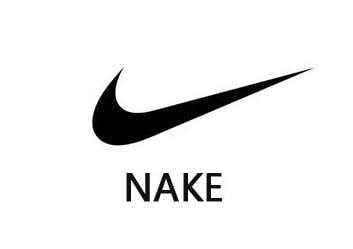
The legalities around branding and copyright are serious business. Before shipping anything across borders you need to be confident that you can prove that you have the legal right to do so. This is especially important when dealing with the original equipment manufacturer, or OEM services. In these situations, the company that produces the product is different from the one that markets it, which can be confusing to customs officials who don’t understand the situation. It is further complicated by differences that might exist between two different countries. Make sure you do the research necessary to sort out these issues before you start shipping to prevent disasters.
Even if everything you do is completely legitimate you still might run into troubles if you are unprepared. Issues can arise if customs agents make an unexpected inspection and have questions that the manufacturer can’t answer. If you haven’t provided the factory with a letter of authorization, that factory might have its goods confiscated. Communications can quickly break down when the two parties are separated by thousands of kilometers and plenty of time zones. Don’t wait for issues to arise, make sure that all potential branding issues address before you try to ship your product out.
8. Incomplete transshipment clauses
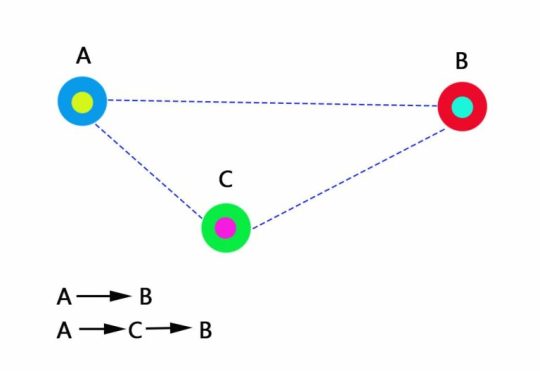
Sometimes the most efficient way to move goods from point A to point B is by making a stop at point C along the way. This is referred to as transshipment, where goods visit an intermediary point in between the place they were manufactured and their final destination. Including such a stop in your route is a smart idea, the problems arise when you don’t let the authorities know about these stops.
Returning to the top of the bill of lading, you need to pay special attention to the transshipment clause if you have opted for transshipping. If you don’t fill out the form to include all destinations then you can get in big trouble. Due to various problems, most consignees will choose to ship their goods to MERSIN/BANDAR ABBAS and then have them transshipped by a local agent. This wouldn’t be a problem, except many forget to include this information in the bill of lading. The solution is as simple as adding CARGO IN TRANSIT TO *** VIA *** BY *** to the transshipment clause. This shows that the consignee is taking on the risks of the transshipment process. But that’s the price you must pay. Only after adding this information can the cross-border transport be carried out.
9. Improper time management
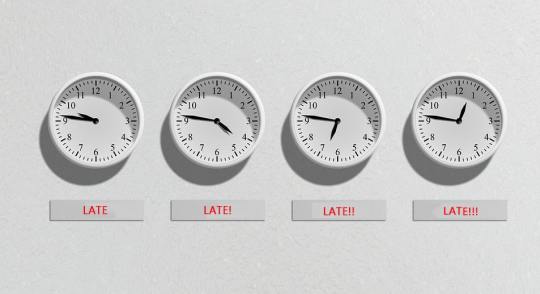
Time is of the essence through every step of the shipping process. The more steps added to the process, the more variables you need to account for in your planning. Transshipment adds new variables and new risks. When using transshipment 21 days free time is indispensable. Without this, the consignee could be stuck paying for an overdue container rental.
This is one area where experience comes in handy. Many forms include a default free time, but that time limit is rarely enough. An experienced agent will know to apply for additional free time to avoid costly overtime fees. The best agents will get their clients the free time they need, whether they ask for it or not. Still, it is in your best interest to be proactive and see to it that your shipping agent is customer-oriented, whether or not the client asks for it.
10. Incorrectly valued goods
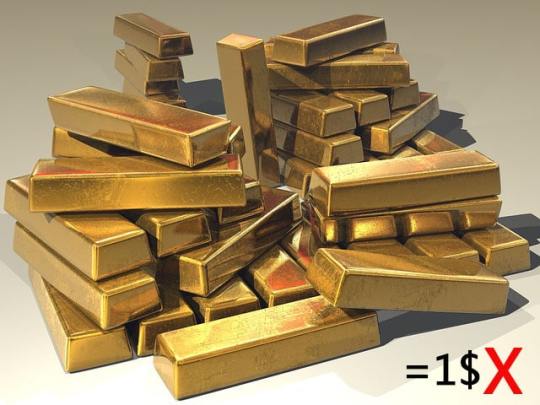
You never want to give customs agents any reason to cause you trouble. Because one of the most sources of problems is improperly valued goods. Taxes are levied based on the value of the goods. So imagine what a customs agent might think if they see a suspicious value. They could believe that you are trying to steal from their government. It should be easy to see how this can lead to trouble.
You should always be as scrupulous as possible when valuing your goods. Even if you think your numbers are obviously accurate you should still prepare to provide evidence to support your numbers. If a customs agent believes you are undervaluing your goods then you could be facing fines or more serious legal actions. Remember that trying to earn a little bit more money with each sale through questionable tactics might end up costing your business.
11. The importance of cargo weight
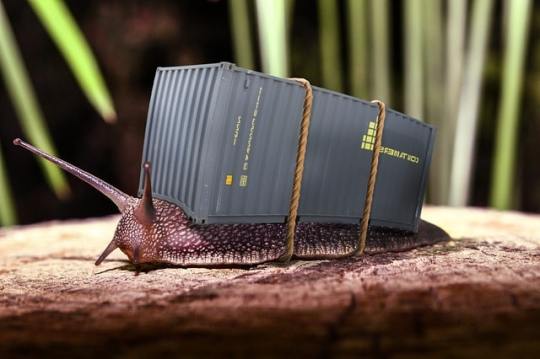
Another critical factor to account for is cargo weight. To begin with, your shipment will need to be an acceptable weight before they can be loaded onto ships and trailers. Going above the maximum weight can result in fees, rejections, and delays. There will also be officials who are looking for discrepancies between the weight you’ve provided. They measure the weight on the ship or in customs. Even honest mistakes can lead to questions that cost time and trouble. Save yourself the hassle by taking the time to calculate and document the weight of your cargo ahead of time.
12. LCL fees
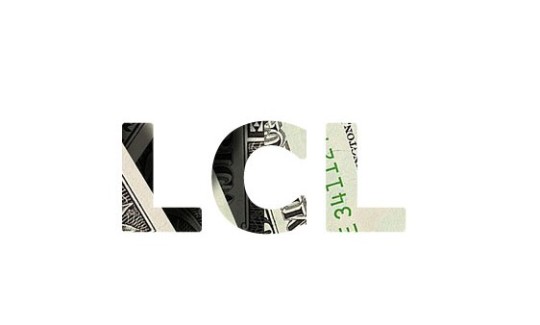
While trying to fit too much into a container can be a problem, you may also get in trouble for not filling up a container enough. When a container doesn’t fill to a certain point you have what is called a less than container load, or LCL. Sometimes you need to ship your goods before you’ve received enough orders to fill a whole container. In this case, you will likely have to pay LCL fees. But these fees are not equal from one location to another.
In areas like Europe, Japan, and India, LCL fees tend to be higher. This is why a good freight forwarder will carefully compare different shipment paths, bypassing ports in these territories when shipping LCL. It could be that a full container might make sense to ship through India while an LCL might be better off going through Sri Lanka or Bangladesh. With every changing variable the profitability of a shipping route changes. Make sure you consider the possibility of LCL fees when charting a course for your next shipment.
Moving freight efficiently and affordability
After examining these twelve traps you should now have a better idea of what freight forwarding entails. There are still many other potential issues to look for. But with these in mind, you will have an easier time spotting problems before they arise.
The most important takeaway should be the value of an experienced partner. The world of importing and exporting goods is a complex web of logistical and legal issues. When you are working in a sector where business runs on tight margins you need to do everything you can to avoid any mistake that could cut into your profits. A experienced trade agent with freight forwarding knows the lay of the land. It can help keep your business moving forward.
Forward-looking research, meticulous paperwork, and careful time management are the keys to successful freight forwarding. If you can master these skills, or hire someone who already has, then you can ensure that your shipments will go as smoothly as possible.
The article comes from: https://www.chinasourcingagent.com/
0 notes
Photo

Imagine having the freedom you have in your retirement, early. What would you do with your time? What would you try? A mini retirement is fast becoming the new lifestyle choice for many people around the world. And it's no surprise!
In a traditional retirement, you’ve worked your entire life in your healthiest years, only to get to spend the last few trying to catch up.
So why wait until the end of your life to do what you love?
A MINI RETIREMENT PLAN
If you haven't already heard of a mini retirement, here's the quick version:
This is what normal retirement looks like:
And this is a mini retirement:
You’ve got short spurts of time off in between working periods. And I'm not talking holidays. I'm talking genuine time off work, maybe even changing careers. Lasting from 2-12 months or more, it’s time you set aside to do what you want to do.
If you want more information, have a read of the articles below:
Read More:
What Is a Mini Retirement? Will it Lead to More Adventure in Life?
Why I Took a Mini Retirement. And Why You Should Too!
So you know what a mini retirement is, but how exactly do you take one?
MAKING A MINI RETIREMENT WORK
Taking a mini retirement is all about balance. We all work. And work is good. Doing things costs money after all. But the key is to appreciate your time as well. Time is finite and we all have roughly the same amount of it.
We all have hesitations. Taking such a long break from working, saving enough to make it happen, you’re going to have questions.
So here are some answers.
CAREER
Will a gap in your resume look bad? Will everyone get promotions and get ahead in their careers without me? Won’t employers think twice about hiring me if I leave every two years?
These fears are normal. Let’s have a look at them.
► Will a gap in your resume look bad?
Not at all. But if you do nothing in that time off it will. It’s important to be developing yourself personally and showing this on your resume. Doing an adventure trip, learning languages and new skills, volunteering, all these things mean something. Sitting at home watching Netflix doesn’t.
► Career progression
Will everyone get promotions and get ahead in their careers without me? If you put effort in to be the best you can be in your career, you’ll get where you want to be. That’s all that matters. And old bosses love having their star performers back. I’ve experienced this with my work and with many people I know. Be the best you can be and it always works out!
► Do gaps look unreliable?
The world has changed. Job security isn’t what it used to be, unfortunately (or fortunately for the new mini retirement trend). The average person now changes job 10-15 times in their lives. That's every 3 years at 15 changes! So what you are doing is no different. And unlike other people, you reap the benefits of a clear mind and refreshed body coming back from each mini retirement!
Bottom line, you will be OK! Life doesn't end and the show goes on!
FINANCES
There are two important parts to making a mini retirement happen.
Saving and spending.
I’m pretty crap at both to be honest. But I also love to have time off. So eventually, I make it all come together for my next mini retirement. Here's how!
► Savings
Saving is something we should all be doing anyway. It’s good to have something ready for emergencies. Just like saving for house deposits, new cars or holidays, saving for a mini retirement starts with actively putting aside money.
So how much?
Most people work on anywhere from $5000-$25,000. It all depends on where you want to go and what you want to do.
A trip to Asia or South America for example, might cost you $10,000 for the whole year. Living in Europe on the other hand, closer to $30,000.
Remember, you can do it any way you want.
Your year off in Asia backpacking will cost you $10,000 on a conservative side, so saving $96 each week for 2 years is your goal.
Too much to save each week?
Save for longer, or take a shorter break!
There’s no right or wrong answers! Work 5 years to take one long break, or work every 2 for a shorter one. It’s up to you!
► Spendings
Learning to live with less has been a growing trend in the western world. In our time of full blown mass consumerism and consumption, there’s a way to live without consuming so much, and it’s called minimalism.
While there’s a whole crowd out there who take minimalism to new levels by only owning 2 shirts and leaving entire rooms bare of furniture for example, for you it’s all about cutting out the stuff you don’t need, reducing your bills, and being happy with what you have.
Cook your own meals and don’t eat out so much. Move to places with cheaper rent, you don’t need such a big place anyway. Cut your shopping bills by checking prices before you buy. And don’t buy so much stuff! Seriously, how much of it do we actually use and how much sits hidden away?
Get rid of it and don’t buy more!
I’m a sucker for buying new outdoor gear. I went from owning 10 backpacks to just having 3 for the main outdoor activities I do. Same went for shoes. And climbing gear. And outdoor clothes. You get the point.
Buy used when possible and don’t impulse buy!
► Debt
The dreaded word. Debt. Unfortunately, you are going to have to get control of any you do have. Taking a mini retirement with a mountain of debt is not going to work well, so right now, make a vow to get rid of it all and live debt free.
Make a plan and take action.
Have a mortgage on a house? Can you rent it out for your mini retirement? Brand new $60,000 car loan? Can you trade it in to pay off the loan payout amount? These are all choices only you can make. Research your options, and there are always options for these things!
The final aim is still the same: be debt free!
FIND YOUR PASSIONS!
The whole point of a mini retirement is to find or do what you love! So what if you don’t know what your passions are? It’s time to find them, and here’s how to do it!
► Travel
Going somewhere new is always exciting, and also opens you up to new activities. You get to talk to people who have incredible experiences and this can lead to ideas on things you want to try. I was motivated to move country and change my entire life because of the collective conversations of people I met travelling.
► Volunteering
Spend some time helping others. Research some projects you can help with and get involved in. You’ll feel amazing and most importantly, you’ll help other people!
►Learn a new skill
If you haven’t got a bucket list that includes learning skills, you should! Try anything you fancy. Yoga, music, photography, the options are all there! And of course my favourites, get outside and try some climbing or canyoning! My outdoor starter guide is exactly there for this purpose!
Before my mini retirement I never bothered trying to take good photos. To kick it off, I did a short 3 hour photography course and got the basics so I could keep going on my own. I also wanted to learn how to write better as I always had trouble with it, and so I started this blog!
► Study
Sometimes a mini retirement can be great if you want to study something new. Try those unconventional things you always wanted to. Acting, dance, singing. Or maybe programming, web design, or just some short course you’ve always wanted to do. Your mini retirement is the best time to do all of them!
ARE YOU READY?
The first step is always the hardest. Working towards a mini retirement takes some dedication to making it happen. The reward is worth it however!
It’s all about keeping some balance in life. Work hard, but keep some time for adventures and passions in your life.
So take a mini retirement, you’ll love it I promise!
0 notes
Text
MOVING CONTINENTS: HOW WE ENDED UP IN TORONTO, CANADA!
In a (partly) unexpected pivot of life, we found ourselves moving across oceans this summer to Toronto, Canada our new home. Here’s the back story to what brought us to Canada and a little advice for those considering moving to Toronto too. Plus.. what’s next for us!
A New Chapter: Moving to Toronto.
Rewind a few years and Canada was not on my list of possible places to live. Not because of a lack of appreciation for Canada, but rather I’d always felt the pull of other places more strongly. That and Canada is not the most budget friendly place to travel! Asia always has – and still does – pull at my heartstrings, and my desire to head East from Europe had been stronger than my curiosity about what might lie in wait in the Americas.
But that all changed last year.
From the moment Ravi and I met, a move to Canada was on the cards. Several months in to his application for Permanent Residency (PR) in Canada, we decided we could not (or did not want to) handle the idea of being on opposite sides of the world. Weeks of conversations and visa research later, we realised we could both head to Canada. One month later my working holiday visa rolled in.

As the temperatures and humidity in summertime Mumbai steadily climbed into sweat-covered-all-the-time figures, we waited eagerly for news of Ravi’s permanent residency, but still nothing. Canada’s immigration website helpfully reminded us that the process could take anything up to two years, meanwhile friends received their visas after six months. After what felt like years of waiting and anxiously hoping his visa would arrive before my Indian one expired, we got the confirmation that his visa had been approved… on my birthday!
Within a few weeks we were leaving Mumbai.
Why Canada? People often ask us. Why come to Canada when it’s the other side of the world for both of you? The short answer is immigration policies. Yes Canada we do love you, but ultimately it is easier for us both to live here than it would be in many other countries, including my home country of the UK. The sad truth is that when you have a G7 passport, the world is your oyster. When you hold a passport from a “developing” country… not so much.
Moving to Toronto: First Impressions
After asking why we moved to Canada, the quick follow up is “Why Toronto?”. For us, that was a head over heart decision. Our hearts called us to the mountains, wild pacific ocean and the west coast of British Colombia, but our heads held us back. Toronto is Canada’s financial hub with most job and networking opportunities, is more affordable than Vancouver (although far from cheap – see below), is English speaking (whereas Montreal is pretty French) – and perhaps most importantly – Toronto is on Eastern Time (making it slightly easier to call home at a humane hour).
Our first impressions of Toronto were not from Toronto itself. Rather we landed in the suburban town of Burlington about an hour outside of Toronto along the shores of Lake Ontario. A friend from Europe – to whom we shall forever be grateful – invited us to stay while we found our feet – and this gave us an opportunity to explore life beyond Toronto’s city limits, which was the perfect introduction to Ontario for us. Reassured by the friendly faces we had met, a few weeks later we moved to Toronto itself.
Here are some of our first impressions.
Toronto is an easy city to navigate for newcomers – geographically at least. Following the North-American style grid system, it’s hard to get too lost. Although as we surveyed the quiet streets for places to eat downtown in our first few days, we started to wonder – where is everyone? Where are all the coffeeshops and eateries? We soon found our answer: they’re below street level. Toronto’s downtown core is linked by a sprawling underground PATH system of walkways – linking malls, foodcourts, shopping and more. It’s all part of keeping warm in the brutal winters. Which brings us to….
The Toronto weather. We arrived in Toronto in June, at the height of summer. Coming fearing the bitter winters that everyone had warned us about, we were not quite prepared for summer days of 30 degrees plus! But that’s what we got. We feel we saw Toronto at its best, and that has helped us (a bit) as we sit here writing this in our winter thermals 😉 As for the winter? Ask us about that in six months.
The Toronto people – or Torontonians – we’d been warned could be a little rude, compared to the average more than friendly Canadian. But we were happy to find the opposite many times. Throughout our first months in Canada we’ve been lucky enough to meet warm people inside the city and outside. Streetcar drivers actually wait for you while running for the tram; pedestrians will help with directions with a warm smile, and we landed on our feet by having the loveliest airbnb hosts we could have hoped for. Despite this being a busy city, it’s got to be one of the few places in the world where people will actually say sorry to you if you bump into them.

Advice for those Thinking of Immigrating to Toronto
Amid the soaring heat and honking of Mumbai’s summer, Canada somehow seemed like the “promised land” to both of us – but of course, it’s not. No place is perfect, not even friendly Canada. On grey days we find ourselves wistfully thinking of English cream teas and meditating on Goa’s beaches at Sunrise – or sipping hot sweet chai at streetside stalls.
Here are just a few of the things we wish we would have known about Toronto, beforehand:
Toronto is Expensive. There’s no two ways about this one. Although Toronto housing is cheaper than Vancouver, that doesn’t mean much. Rental prices are sky high with a tiny but nice 1 bedroom apartment in downtown Toronto going for around 2,000 CAD per month. Plus utilities. Intense competition from other renters means you won’t be able to negotiate that down, either. Many products are imported from the US, making them more expensive, and compared to Europe the compulsory tipping of around 15% for eating out or services hikes up the cost.
The Housing Market is…. Crazy. We live in a condo (apartment) building where the corridors have not been carpeted and the upper floors not finished.. because it’s still under construction! Yet 70% of the units (that are finished ;-)) have been occupied. In other countries, it would be illegal to rent out units in an unfinished building. In Toronto, that’s just the norm – because demand for housing is so high. You won’t get a discount for it either. Everywhere cranes dot the Toronto skyline as construction continues to try and solve for the current lack of housing. It’s known locally as “densification”. So a house with a garden in Toronto? Forget it.
Everyone is lovely in Canada… Except the Immigration Officials. These guys & gals are not to be messed with! Neither of us get stopped or questioned much when entering or exiting countries (luckily) – but in Canada, it’s a whole different level. We’ve never been so grilled about our motives for being in a country (or sent to customs checks so often) as we are in Canada. Just prepare your answers well, and any stories – well, leave them on the plane.
Know that if you’re coming to Canada on PR, you can’t leave the country again until you get your PR Card. We found this out the hard way. Midway through planning our trip to Jordan, we suddenly realised Ravi needed documents to get back into the country: the only acceptable document being a PR card or travel permit. But, turns out those travel permits can only be obtained outside Canada and could take up to 6 months! Not a risk we were willing to take – but in the end the PR card turned up just the day before our flight to Amman. PR cards typically take about 3 months to arrive – but no-one will give you an exact date.
Ontario is Beautiful Too. Mention “Canada” and Lake Louise, Banff, or the Rocky Mountains probably spring to mind. But the truth is, while some of those places are seeing a massive influx of tourists and instagrammers alike, there’s far more of beauty in Canada. Although it may not have mountains, Ontario is home to beautiful lake country a few hours north from Toronto. We were lucky enough to experience Canada day with friends on the beautiful and quiet Stoney lake in a cottage. You don’t need to own a cottage to get in on a the lake action, either – there are plenty of rentals on sites such as Booking.com.
The End of “Nomadism” – and What’s Next for Soul Travel!
Our move to Canada marks the end of an era for us – for now at least. After two years of travelling with no fixed address, I now have a fixed address again. The change has been welcome – the ideal for both of us has always been to travel with a base rather than without one; but little did I expect that base would be Canada.
During our time here we’ll be doing some long over-due catching up on work, blogging, and developing our business that supports marketing for sustainable tourism and lifestyle companies. We’re both really excited to expand our work and help brands that are focused on making sustainable travel easier and more widespread.
We’re also excited to start exploring Canada further, and beyond into the region of the Americas. We’ve already had our first foray into Costa Rica, which did not disappoint! We hope to be heading out to see more of Canada in 2019 (perhaps when the snow starts to thin 😉 ) – and can’t wait to share stories from those journeys with you.
The post “ MOVING CONTINENTS: HOW WE ENDED UP IN TORONTO, CANADA! “ was originally seen on Soul Travel
Toronto Naturopathic Doctor - Dr. Amauri Caversan
0 notes
Text
Welcome to Miami
You’ve seen more in 5 days in Miami than Pete & I have seen in one year!
Coconut Grove: My Sister’s Place
I recently had the opportunity to visit my sister, Erin and her boyfriend, Pete in their amazing place in Miami. This was the first time I’d visited them since they lived down there. The 3 of us had the weekend together and then I had Monday-Wednesday to explore the city on my own, while they went to work. (They are currently in Hawaii now, so don’t feel too bad!)
During our weekend together, we did all things #relax: pool time, patio time (they have an amazing view), and of course amazing eats, most of them waterfront:
1 Hotel Miami Beach, Planthouse: brunch with a view of the ocean
Rusty Pelican: dinner on Key Biscayne, waterfront, view of Miami skyline
Lulu’s: Coconut Grove’s lovely downtown spot for brunch and people watching
Berries in the Grove: walkable local joint where we watched the Kentucky Derby!
Havana Harry's: authentic Cuban cuisine!
Doc B’s: downtown Coral Gables, fantastic all around, amazing guac
Coconut Grove is a sweet section of town, mostly with a residential feel, but also right next to the train and Route 1, both of which get you anywhere. Erin & Pete lived car-free in Phila and they remain car-free in Miami. It’s pretty awesome and very doable! Our trio had a blast together eating, relaxing and reconnecting - I can’t wait to return!
(This was a quick post, so I’m bunching the pics together, #sorrynotsorry)

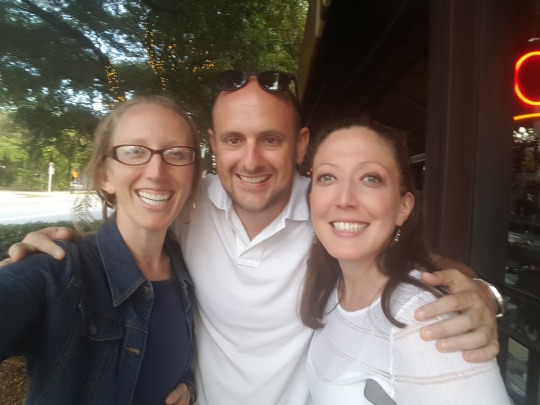
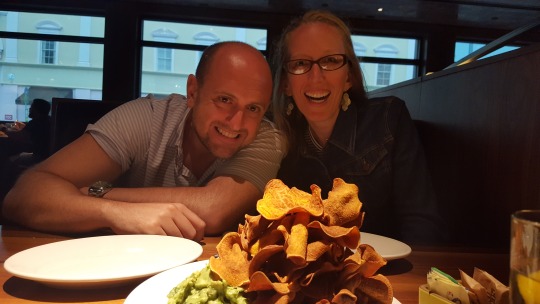


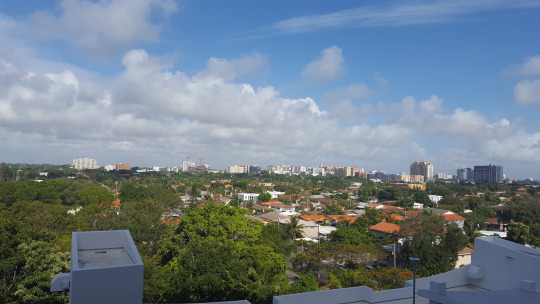

Monday: Little Havana
I had rented a car for my explorations from Monday through Wednesday. I’m not afraid to drive in new places or cities, thanks to being thrown into NY City as a nun and learning it on my own with a GPS! Nothing really scares me after that: If you can cruise in NYC, then you can cruise anywhere! (I’ve also driven a 12 passenger van on the left side of the road in Guyana, so there’s that. #ssvm #nunlife #missionaryadventures)
Anyway, of course my first desire when thinking of exploring Miami would be to
visit Little Havana! It was only a 15 minute drive from Coconut Grove! The neighborhood is actually 3 square miles, most of it residential, so I just parked on a side street and made my way up to Calle Ocho, which is the main street of Little Havana.
The only part of Cuban culture I’ve ever been close to was Maria Cruz. She was a teacher at the church I worked for in Spanish Harlem, San Pablo. She had grown up in Cuba and lived there during the terrible times of Fidel Castro. She taught religion secretly and remembered what it was like to not have access to sugar. She lived there during the scarce and scary times & always had stories to tell. Then, she came to New York. I remember she would occasionally bring us (the nuns who worked in the CCD office) Cuban coffee, in those tiny NY cups and it was the richest, yummiest coffee I’d ever had! That was the closest to Cuban culture I ever got, until now.
My first goal was to find a cuban bakery or coffee shop and score some coffee & sweet breads or cookies to go along, then to sit and just people watch. Luckily, as I rounded the corner of Calle 8, I stumbled upon just that and ordered un cafe cubano and some I-don’t-know-what-they-are-called yummy cuban cookies. I took my treats down the street, seeking a bench to chill on, which I promptly found at Domino Park. Domino Park is just what it sounds like - a dozen or so tables, filled with locals (mostly men) playing dominos, laughing, drinking their cafes and chatting. It was a hub of bustle and I sat right down and enjoyed the scene! One of my favorite things to do while traveling is to find the local hubs, sit and just watch the people. I like to blend in (if possible), remain unnoticed and just observe humanity. It’s fascinating. I made eye contact with various of the players (old enough to be my grandparents,) smiled and I think they appreciated that I just quietly came in and sat down. There were loads of other tourists who came in charging with their cameras, hovering around the tables snapping photos, as if these folks were statues or something. It felt weird to me and I appreciated just being on the sidelines, enjoying my cafe & cookies, just watching.
From the park, I just wandered up and down Calle 8, snapping pictures of everything colorful, vibrant and interesting - which is basically everything in Little Havana. From the trash cans with Cuban art on them, to the wall tiles, street murals and picturesque cafes and walkways. I’m not really a shopper, so I skipped all the souvenir stores (although many looked like they had fun stuff!) and always consider my photos the best captures of my experience that I get to take with me for free. I love shooting new places, capturing scenes, art, and interesting corners or angles that people may not notice. So I spend the next 2 hours doing just that and it made me very happy. I also scored a second cafe cubano, because why not?
I’m not one to educate on history or culture, but Cuba does have an interesting, terrible and unique history behind all the colorful culture and rich coffees. I’ve read about it and learned first hand from Maria Cruz. It’s worth a look-up, whether or not you ever visit Little Havana or Cuba. (Same goes for any culture/country - who were the native peoples, what is their true history, whose land am I on, etc. )
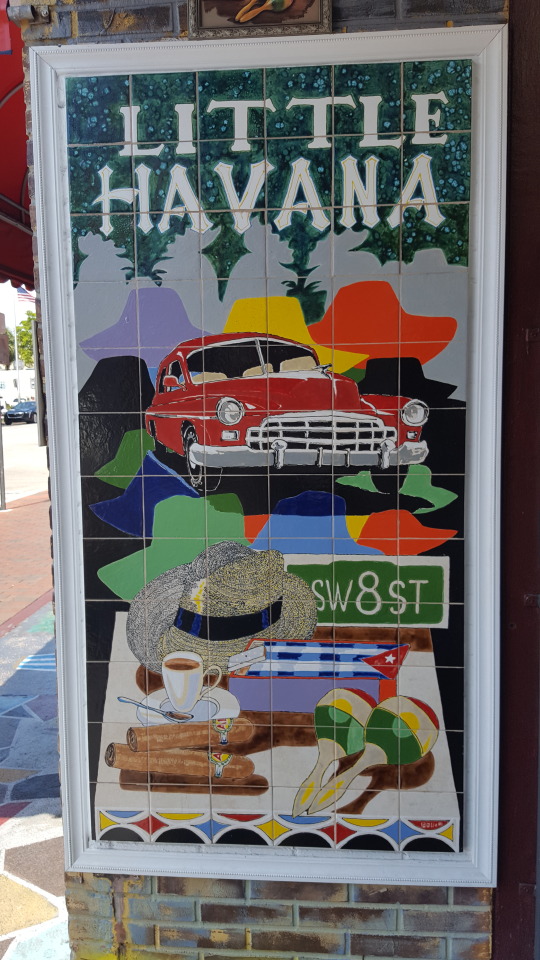





Tuesday: Miami Beach Botanical Garden; South Miami Beach; Matheson Hammock Park
There are at least 5 amazing gardens one can visit in the Miami area, but the Miami Beach Botanical Garden is free! I drove the interesting highways over to Miami Beach and parked in the lot for a whopping $2/hour.
I was expecting the Gardens to be the size of the one here in Phoenix, which could easily take 2 hours to wander through. The Miami Beach Botanical Garden was probably only about ⅓ the size, but reconciled the lack of acreage with rich, lush, tropical radiance! They had a pond with fish, turtles and frogs! A Japanese style garden, a labyrinth you can walk through, various fountains peacefully cascading water and everything in bloom, green and refreshing. Just walking around was like breathing healing air.

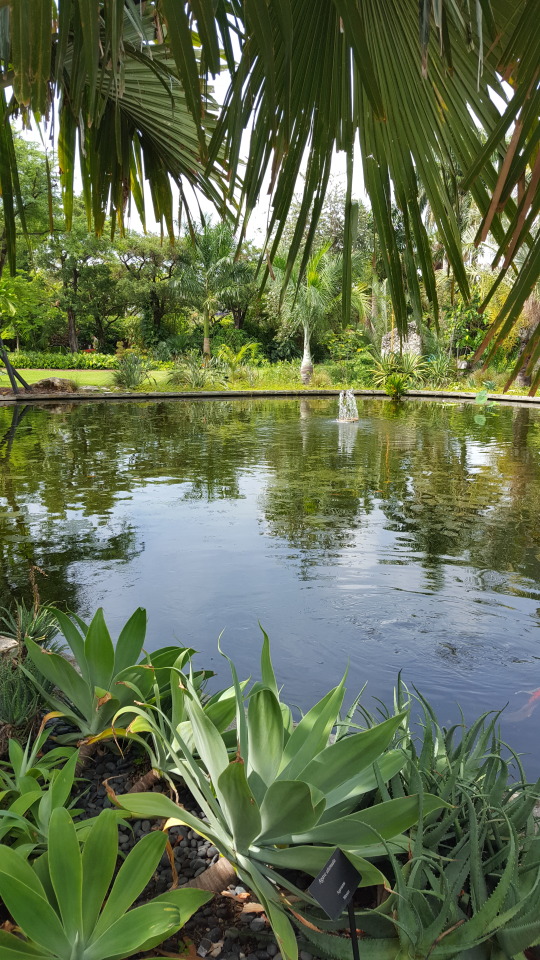

I spent about an hour there and still had time on my car to spare, so I was like, “OK, what am I near right now? Where can I explore?” Turned out I was a 15 minute walk from South Beach, aka: the Ocean, so I headed east! Walking towards the beach, I heard dozens of languages, most of them totally unfamiliar to me, like from Eastern Europe and Asia for sure. Pretty neat.
The beach was calm, free (take notes, NJ) and very blue!! I walked to the water, sat in the sand and enjoyed the moment. I didn’t have a bathing suit on, so I just walked in to my ankles, but the water was refreshing. I would have jumped in, but I still had things to do that day and didn’t want #wetbuttcarseat.

I made my way home just in time for the afternoon shower to land. Afternoon showers are a thing in Miami during the rainy season. They usually pass in 1-2 hours, which this one did. Enough time for me to eat lunch and read a bit.
My next stop was the Old Cutler Trail, which I had read was great for biking or walking along. It was 13 miles in total, but one could start wherever and just meander. Well, I found the start of the trail in a gorgeous, historic neighborhood, but it seemed much more ideal for biking. I didn’t just want to walk in a neighborhood, so I kept driving along Old Culter just to see what I might find. This is just how I roll.
Shortly, I saw a sign for Matheson Hammock Park, aiming toward the bay, so I followed that sign. For $5, I could drive in and explore the bay area, swim and relax. It was shortly after the storm, so the place was pretty empty except for me, some lifeguards wandering around and the sunshine. Palm trees, calm beaches, a view of the Miami skyline. I explored the beach pretty intensely and witnessed all kinds of crab life happening right at the waters edge, and quite literally under my feet! It was a very lively shoreline! I watched the crab and critter bustle for quite some time! I relaxed on the picnic tables and watched the water, felt the breezes, just took in this secluded place I happened to find. I felt lucky!


Wednesday: Ancient Spanish Monastery
On my last day in Miami, I ventured to North Miami where the Ancient Spanish Monastery was situated. I guess, Dear Reader, you’ve figured by now that I’m not one to just lay on the beach for 3 days straight! Don’t get me wrong, I love the ocean, but if I have the opportunity to explore a new city, I dive in! I love any reason to wander, take pictures, see something new. So, prior to my trip, I of course researched and selected a few main sites to visit, one of them being this Monastery that just looked gorgeous. I love old buildings, things that feel European and old, and of course there is my ever-affinity to anything related to #monasticlife! Well, this monastery would prove much more interesting than I anticipated!
History from Spanish Monastery:
“Construction of the Monastery of St. Bernard de Clairvaux was begun in the year 1133 AD near Segovia, Spain. Cistercian monks occupied the Monastery for nearly 700 years. After a social revolution in the 1830's, the Monastery’s Cloisters were seized, sold, and converted into a granary and stable.
In 1925, William Randolph Hearst purchased the Cloisters and the Monastery's outbuildings. The structures were dismantled stone by stone, bound with protective hay, packed in more than 11,000 wooden crates, numbered for identification and shipped to the United States. Soon after the shipment arrived, Hearst's financial problems forced most of his collection to be sold at auction. The massive crates remained in a warehouse in Brooklyn, New York, for 26 years. One year after Hearst’s' death in 1952, they were purchased by two entrepreneurs for use as a tourist attraction. It took 19 months to put the Monastery back together. In 1953 Time magazine called it ‘the biggest jigsaw puzzle in history.’
In 1964, Colonel Robert Pentland, Jr, who was a multimillionaire banker, philanthropist and benefactor of many Episcopal churches, purchased the Cloisters and presented them to the Bishop of Florida. Today the parish Church of St. Bernard de Clairvaux is an active and growing congregation in the Episcopal Diocese of Southeast Florida.”
The photos show how beautifully restored this place is, in addition to it being basically another botanical gardens. There was a labyrinth on the grounds one could wander through and rows of perfectly planted, vibrant flowers. Moving through the Monastery was like being in a different epoch. Knowing that generations of monks silently moved through the corridors, ate in the refrectory and lived religious life within those stones was pretty amazing. Worth the visit, if you geek-out on this stuff like I do. Plus, a gorgeous place to take pictures!


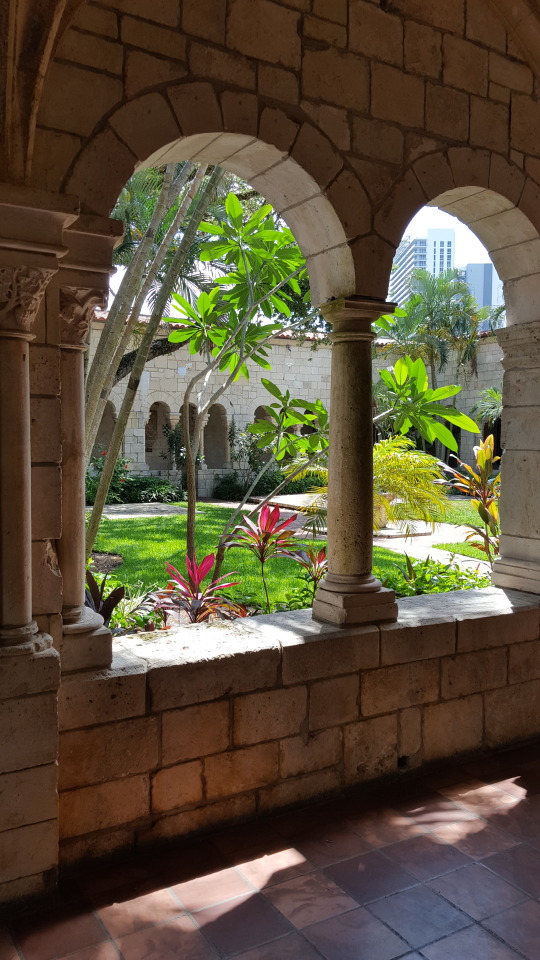

En Fin
My adventure in Miami was fabulous and now I want to move there. Seriously, the green and the water, the tropical vibe got me. While I love the desert and all Phoenix has been to me, Miami felt like my next move. Next move, like give me a year or so to get my biz going, then tropics here I come! Not to mention, my brilliant sister & her fab partner Pete live there. Miami felt real good.
Te veo, Miami, te veo. Ya pronto.
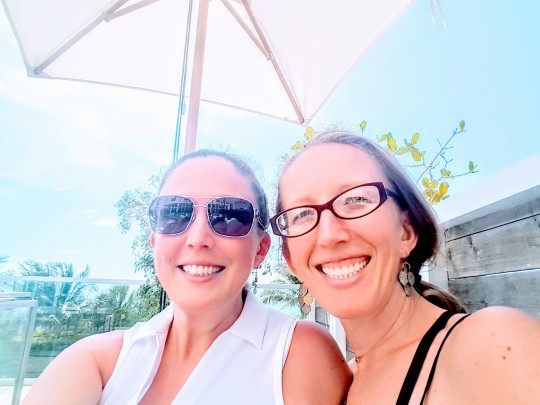
#miami#tropical#littlehavana#coconutgrove#tropics#miamivibe#adventuresinmiami#explorer#girlswhotravel#missionaryadventure#nunlife#sisters#ponderings
0 notes
Text
Cambodia: From Pain to Pride
The year is 1975. There has been a civil war raging in the countryside of Cambodia for five years between the weak monarchy in power and the communist regime known as the Khmer Rouge. The monarchy was made up of mostly educated and wealthy Cambodians working in the government/military, while the Khmer Rogue base was predominantly farmers and rural villagers. On April 17, 1975, the Khmer Rouge overthrew the monarchy and took control of the capitol, Phnom Penh.
Over the next four years, two million people were killed under the Marxist leader Pol Pot and the Khmer Rouge. In a dramatic effort to force Cambodia back to the Middle Ages and create an agrarian utopia, one-fourth of the population was tortured, starved and murdered. Intellectuals were the target. Cities were emptied. Currency was abolished.

We spent a day at the S-21 jail in Phnom Penh, learning about the horrors of just one of hundreds of torture camps in Cambodia during this time.
Communication to the outside world was completely cut off. One Swedish photographer and his team were invited into the country, and Pol Pot put on a grand show for them… making it seem as though everything in Cambodia was picture perfect. The team returned to Europe and reported to the rest of the world that there was nothing to worry about in Cambodia, and that Pol Pot was a beloved leader taking care of his country.

Meanwhile, 17,000 prisoners were being tortured and killed in the heart of Phnom Penh. Only twelve people who entered S21 survived.
The Khmer Rouge were eventually overthrown by the Vietnamese in 1979, but the horror would live on in the lives of Cambodians for generations to come and the effects of the war are easily visible today. When you spend time in Cambodia, you’ll quickly notice that you don’t see many old people; it’s rare to see someone over the age of 60 out and about. The U.N. continued to recognize the Khmer Rouge as the governing body of Cambodia until 1991, even though they were no longer living in Cambodia and were hiding in exile in the hills of Northern Thailand. Pol Pot wasn’t brought to trial until 1997, and only then was he sentenced to house arrest where he died a year later.
If any of this intrigues you, I recommend reading First They Killed My Father -- one of the only first person accounts of the genocide, told from the perspective of 5-year-old Loung Ung. She was separated from her parents and six siblings and sent to a child soldier camp, miraculously survived the war, and eventually made her way to America where she began telling her story to anyone who would listen.
In my research on Cambodia, I came across this quote from Joseph Mussomeli, a former US Ambassador to Cambodia:
“Be careful because Cambodia is the most dangerous country you will ever visit. You will fall in love with it and eventually it will break your heart.”
I couldn’t describe the feeling any better. In many ways, our time in Cambodia was like other the SE Asian countries we’ve visited -- markets, temples, beaches, and bungalows -- but what made us feel more connected to this special place was the people. Despite the tragedies they’ve endured in quite recent history, they have the friendliest attitudes and most positive outlook on life. While it continues to be one of the poorest nations in the world, the people have fully embraced tourism as their fastest growing industry and exude hope and optimism with every interaction.

And with that, I’ll leave you with these photos + captions of our four glorious yet heart wrenching weeks in Cambodia:
Angkor Wat: The Largest Religious Monument in the World
First up was Siem Reap, a charming city home to Angkor Wat - the largest religious monument in the world. We spent two days exploring the Angkor Archaeological Park, which spans over 400 acres of Cambodian jungle.
Originally built as a Hindu temple in the 12th century, Angkor Wat was converted into a Buddhist temple in the 14th century, and served as the capital of the Khmer Empire through the 15th century. At it’s peak, the complex was home to 1 million people (!!) making it the largest city in the world until the Industrial Revolution. Today, it’s protected as a UNESCO World Heritage Site, welcoming several million visitors per year.

Watching the sunrise with 1,000+ fellow travelers.

Garrett and Sarafina (who we met in Laos) traveled with us throughout Cambodia, making our time in this lovely country that much sweeter.
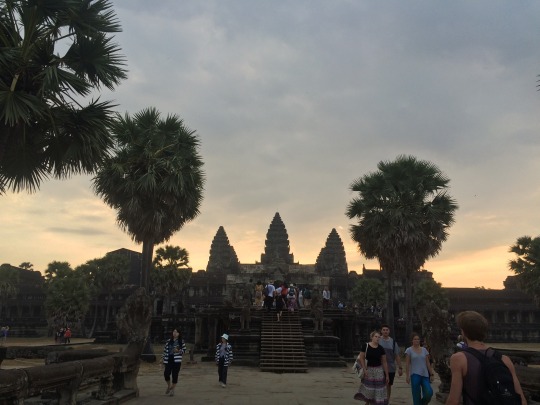

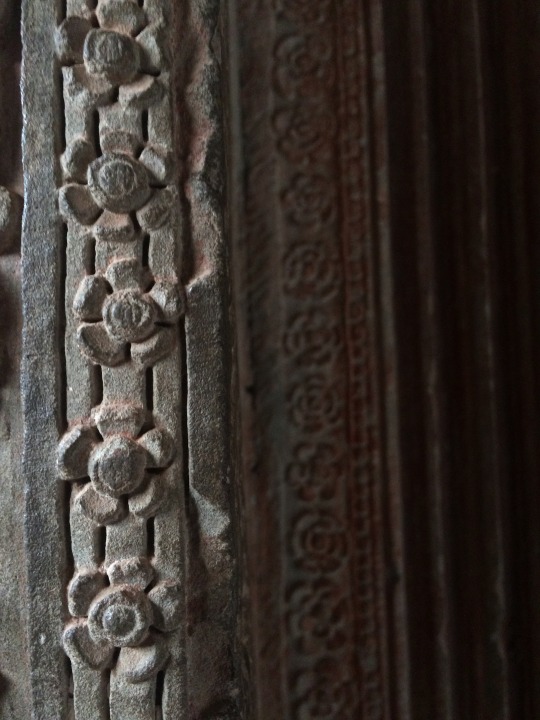
According to inscriptions, the construction of Angkor Wat involved 300,000 workers + 6,000 elephants, and took over 30 years to complete to it’s current state. However, it was never fully completed and no one knows exactly why...
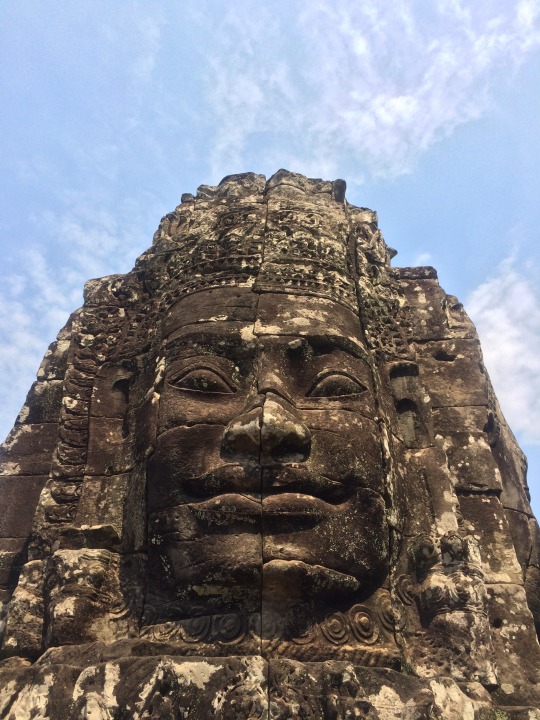
The faces of Angkor Wat, otherwise known as The Banyon. Two-hundred and sixteen faces make up the only Mahayana Buddhist shrine in the Angkor Wat complex. The faces are said to belong to the Bodhisattva of compassion, who has mastered the soft smile.
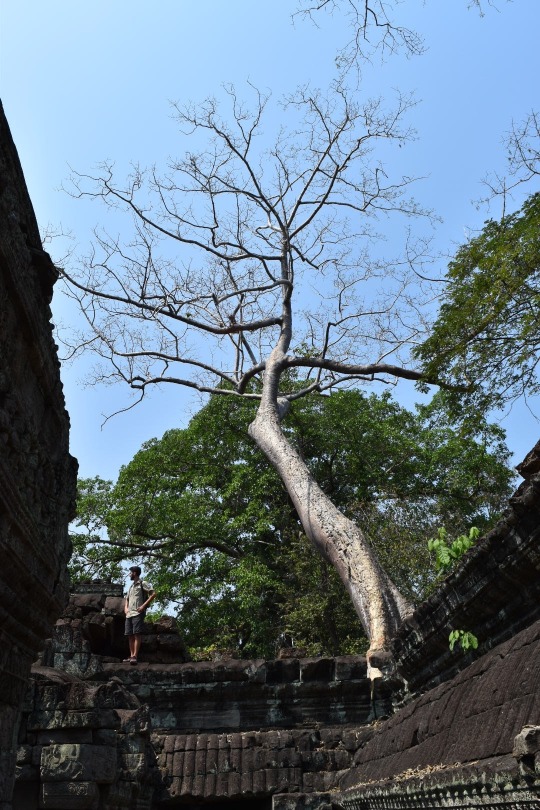
The Khmer architecture was shaped to express the Hindu vision of the relationship between nature and humanity... creating a strikingly beautiful dichotomy between crumbling stone and thriving forest.
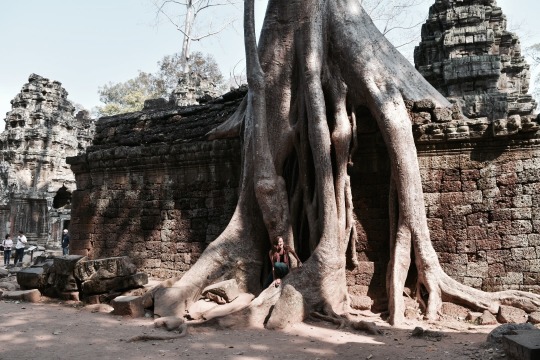
10 Days in Otres Beach
Next on our list was Otres Beach. We arrived in the port city of Sihanoukville via a 12-hour overnight bus from Siem Reap and walked straight to the beach to find a home. We snagged a private bungalow at Sea Garden Guest House for 10 USD per night. What sold us was the large vegan menu, real coffee and the fact that they delivered your food straight to your beach chair. The employees at Sea Garden were all fellow travelers, working a few hours a day in exchange for free food and lodging.

W quickly learned that Otres Beach moves at it’s own pace and attracts and a very unique type of long-term traveller. We heard this line time and time again: “I planned to stay for 3 days, but now it’s been 3 weeks.” Soon enough, we were saying the same thing; we planned to stay 3-4 days and finally left after 10.

Our days were nearly identical to our week in Goa, India... morning runs, afternoons spent reading and tossing the Frisbee, sunset yoga and reiki and evenings playing trivia next door. The guesthouse next door had a small library that rented books for $0.25/day and boasted a huge collection of Beat authors (Kerouas, Ginsberg, Kesey). If we didn’t have a 30-day visa, I think you’d find JJ still reading at the beach six months later.

Otres Beach is around 3 miles long, with a large stretch of sand splitting the guesthouses and spanning 1.5 miles of emptiness. Ten years ago, this stretch was full of bungalows just like ours, but they have since been torn down by the Cambodian government to make room for new Chinese development.
The properties on Otres (including our beloved Sea Garden) have already received their eviction notices, and will have to vacate their land sometime in the next three years. Maybe that’s why people stay Otres so long... because they know this hippy paradise of cheap vegan food and unobstructed sunsets is coming to an end very soon.
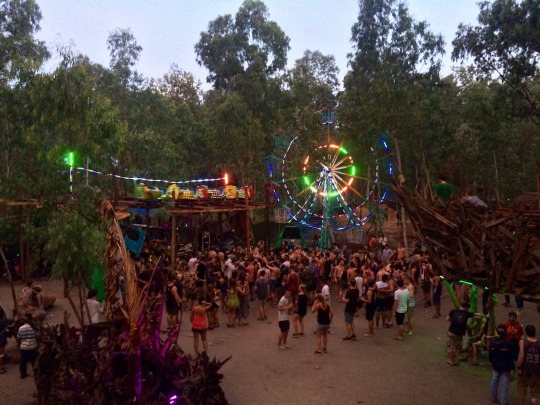
One night, we decided to venture out from the safety of our beach and check out a sunrise party in the jungle called Kerfuffle. This jungle rave happens every Wednesday night, and doesn’t kick off until 2am. In an effort to get nearly a full night’s sleep, we went to bed at our normal time (9pm) and set our alarms for 2am, hopped in a tuk-tuk and got to the rave around 2:30am. We boogied until sunrise, making it back to our beach for a nap around 7am.
The set-up was reminiscent of a music festival... with a DJ stage, Ferris wheel, tree-house behind the dance floor and lights twinkling in the trees. At one point it started pouring down rain and we all huddled underneath one of the carnival rides until the DJ started playing again.
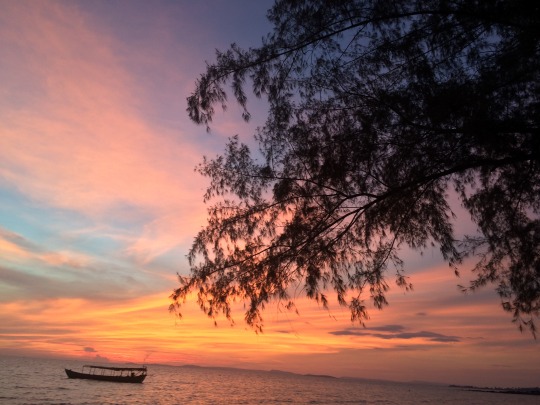
We’re unable to capture the highlight of Otres Beach in photographs, because it involves seeing the ocean glow. The coast of Cambodia is known for it’s bio-luminescent plankton that glow a bright green color when disturbed. All you have to do is swim out into the ocean in the middle of the night (one of my worst nightmares) and make a lot of movement. After a few minutes of splashing around in the dark, JJ said “look down.” And there it was... thousands of glowing green stars moving with our bodies underwater. It was magical and we spent hours mesmerized by how cool our planet is.
After swimming with the plankton, it was finally time to leave Otres. Our minivan to Kampot picked us up right on time and then made one additional stop to snag another round of passengers. We pulled up to a nearby hotel and the driver got out of the car to help the guests with their bags. However, he forgot one minor detail of putting on the parking brake... and the van started rolling forward, heading straight for the hotel pool. JJ and I stared at each other in horror while the driver nonchalantly made his way back to the van, put it in park and laughed uncontrollably. He then went back to get the bags and the van started rolling forward AGAIN. This time we jumped out of the van, landing safely on the ground and refused to get back in until the driver promised not to leave his seat.
Oh SE Asia... always keeping us on our toes.
Kampot + Kep
We spent the next week exploring the waterfront towns of Kampot and Kep... living in tree houses, eating very mediocre crab and tasting the “world famous” and incredibly over-hyped Kampot pepper (ever heard of it? neither had we).
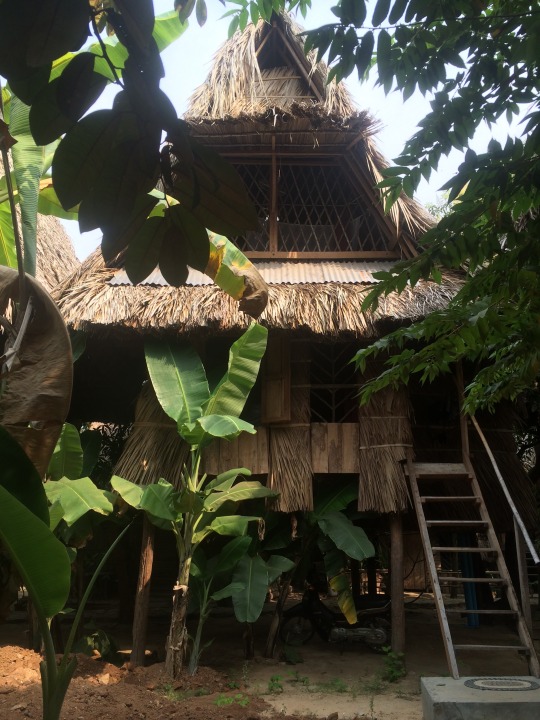

. Cambodia in the clouds.

Funky bathroom art: say hello in your language :)
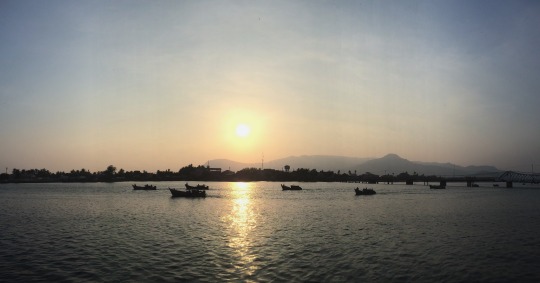
What may appear to be a peaceful sunset scene is in reality a fleet of Vietnamese fishing boats that have encroached upon Cambodian waters using illegal fishing practices (electrified nets) to steal the catch of the day. The police department and fishing authorities have very little control, which has led to a vigilante war between the two fishing communities and caused nearly irreversible ecological destruction.

Once a charming coastal town frequented by French vacationers, Kep is now trying to regain it’s status on the backpacker trail as the place to go for fresh crab. Twenty-five stalls line the beach with signs proclaiming their fish superior to all the others. While the flavors were quite underwhelming, watching these two play with their food more than made up for it.
Rabbit Island: More Hammocks Than People
As if our time in Cambodia hadn’t been relaxing enough, we retreated to a tiny island off the coast of Kep for a few days. What we found was more hammocks than people, the best curry of our entire trip, and lots of Vitamin D.
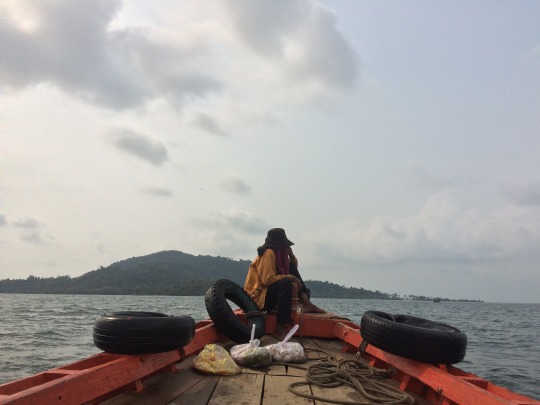
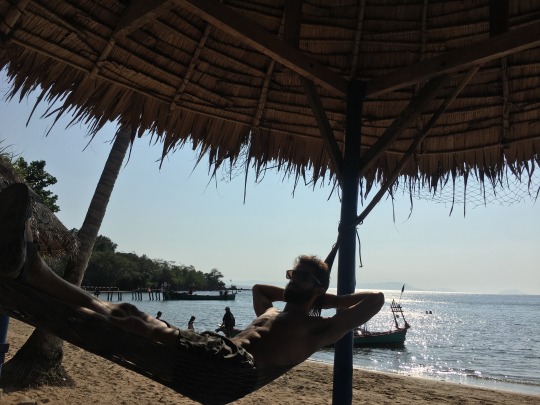
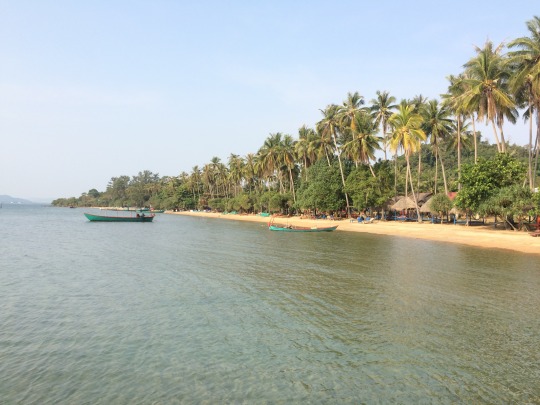


Forever chasing cairns.
Phnom Penh: Our Favorite Big City in SE Asia
This city blew us away with it’s sense of community, vegetarian food, and booming infrastructure. At one rooftop bar, we counted 40 cranes on the horizon. The smells, sights, sounds, markets, and nonstop dodging of motorbikes reminded us of India, and we quickly took a liking to it.

Cambodia (especially Phnom Penh) is known for it’s knock-off name brand shopping game. You can get anything from iPhones to Levis to designer bags… and we dedicated an entire day to exploring these markets. JJ hit the jackpot at this little air conditioned store where these five Cambodian women dedicated two hours to finding him the perfect pair of paints. He walked out with three new pairs, all perfectly tailored to his body, for a whopping $32.

In the heart of the market, just when you think you may pass out from heat exhaustion... you’ll find Mr. Al Bounnarith, who makes the self-proclaimed (and rightfully so) “best iced coffee in Phnom Penh.” He started this venture right after the Khmer Rouge in 1980 when coffee was a foreign concept to Cambodians, used all of his profits to care for his sick mother, and now spends his days entertaining travelers and leaving us feeling refreshed and WIRED.

Finding good, cheap, vegetarian food in SE Asia is difficult... so we were thrilled to find a spot with $0.50 pumpkin juice, $1 fried mushrooms, and $2 veggie noodles. Naturally, we ate here four times in three days.

If I could capture the essence of modern-day Cambodia in one place, it would be at the Olympic Stadium. Ironically, Phnom Penh has never hosted an Olympics... but nevertheless, our hotel was just a few blocks from here, and we read online it was a good place to run. Little did we know it was also home to the number one place to work out in the city. We went running there twice, once in the morning and once at night... each time marveling at the sense of community radiating from this place. There were street-side market vendors selling fruit and fried noodles at every turn, sand volleyball games, paralympics events, tennis matches, Taekwondo tournaments, zumba classes, and hundreds of people just hanging out. We were the only westerners there both times, and we loved it.

Photo courtesy of Google.

Towards the end of our time in Cambodia, we met a fellow traveler who shared our love for the country and had spent way more time there than our 30-day visa would allow. As we said goodbye to him, he left us with this: “The best places in Cambodia have yet to be discovered.”

So my advice to you is... go to Cambodia! Embrace it’s history. Let your heart break. Support the local economy. Exchange smiles with every person you cross. Discover those undiscovered places.
We can’t wait to go back one-day soon.
Cheers,
Camryn
1 note
·
View note
Text
7 Things I Wish I’d Known About Studying Abroad (List)
Original article here: https://goo.gl/ha5kvu
Planning on studying abroad as part of your degree? Well, we've got you covered, because our bloggers have been there, done that. University of Manchester student, Elena Cotton, goes through 7 things she wishes she knew about studying abroad before she embarked on her own journey...
Studying abroad will undoubtedly be the best decision you make throughout your time at university. Having just returned from a semester in the US, I can say this wholeheartedly. However, it is important to be aware of exactly what you're getting yourself in for. So, here is a list of 7 things I wish I'd known (and actually bothered to pursue) before I jetted off for the experience of a lifetime.
1. Budget
Your university will likely give you an estimate of how much money to save for your time away. Whilst useful, it's always best to plan to take as much money as you can. Who knows? You might wish to travel more, join societies, buy souvenirs. Obviously, none of this is essential and if you're really strapped for cash then don't let it panic you. However, it's always useful to carry a little extra just to ensure you can make the absolute most of your time abroad. If (like me) you can't go running to the bank of Mum and Dad, getting a summer job is a really great way to save for your next adventure. Working at summer camps is particularly good, as although they include long hours and hard work, they pay well and often provide you with free bed and board - a bonus if you're looking to move somewhere new or cannot face the boredom of reuniting with your hometown. If kids aren't for you, bars and retailers are always on the hunt for fresh employees at this time of year.
2. Research local laws
These will vary from place to place and are usually less of an issue if you're studying in an EU country. However, if you are venturing to locations like the US, Canada, Australia or Asia then getting to know local laws is key. This is particularly true in the US as state laws often vary from federal rulings. A quick google search of "most important laws to know as a tourist in…" takes about five minutes and could save you a whole lot of hassle whilst you are away.
3. Stay healthy
In the UK, we are blessed with free healthcare under the NHS. Unfortunately, this is not the case in a lot of countries outside of Europe - particularly North America and Canada. Not only should you budget for health insurance (costing around $350 for one semester) you should note that even with this, not all treatment is covered. Don't let this worry you too much though - it's not uncommon for hospitals in the US to charge you hefty sums unnecessarily. Sometimes you are able to negotiate fees down to a reasonable amount, or even have them discounted completely.
4. Different countries have different environments - so be prepared for surprises
As I discovered whilst getting stranded in a sand storm in the Nevada deserts - weather abroad is far less mild than our ever-overcast UK. We have been conditioned to expect (at worst) some heavy thunder and flooded basements. However, the rest of the world can bring some surprises in this department. This could be anything from worst-case-scenario hurricanes to something simply unexpected - like cloudiness in California throughout May and June (and there was me thinking we'd be soaking up rays in the Golden Coast...). Again, educating yourself on the different conditions you can expect could take under half an hour but will help you choose what to pack and where you go should you decide to embark on post-placement travel.
5. Leave your suitcase half empty!
You are probably going to be away for at least six months, so undoubtedly you will need to take a fair number of things with you. Yet, I would strongly suggest that despite your best instincts you leave that pile of nostalgia t-shirts you got in Freshers week at home and really only pack the bare minimum. You might think that your time on your placement will allow you to enter a new era free of materialism and the need to buy things. It won't. You will want to join your friends in buying staple university merchandise - jumpers, t-shirts, flags… and you're going to need to find room for it. I made the mistake of over-packing by so much that I had to send packages home - and at $65 per parcel, it did not come cheap.
6. You don't have to enjoy every single moment, 100% of the time
It takes a lot of hard work to be able to go on exchange - in university, part-time jobs and travel arrangements. So, when you get there you will be overjoyed that you made it and want to start living the high life ASAP. Yes, the first few weeks are a tornado of parties and excitement, but after you get into the swing of things and the workload hits it's inevitable that you'll start to feel homesick. This is normal! Studying abroad might seem like this exotic prospect (and a lot of the time it is), but it is also just you living your life somewhere else. It is impossible to feel the happiest you've ever been all the time. In fact, there will be moments when you wish you could just jump on a plane and snuggle with your dog. Fear not, for this too shall pass. Studying abroad will be filled with amazing highs, but also, at times, intense lows. Try not to beat yourself up when these lows hit as, despite what your friends on exchange in Singapore, Toronto and Berlin's Instagrams' tell you, they are feeling exactly the same.
7. It won't last forever
A semester, or indeed a year, will seem like forever before you leave. In fact, for the first half of your time away it will seem like you'll never go home. However, this will change. Despite your best efforts to deny reality, there will come a time when you realise that you only have 6 weeks left and you still haven't explored half of what your host university has to offer. Going on exchange is one of - if not the - most exciting experiences of your university career, so make the most of it! Meet as many people as possible, go out and join new clubs, experience new things, make friends from all over the world! It will fly by in the blink of an eye, so be sure to do everything to make this a trip to remember.
About the Author: Elena Cotton is an undergraduate of Politics and Modern History at the University of Manchester. She has held the roles of News Editor and Head of Publicity at her student paper and radio station respectively. She also writes for online publications Babe, Society 19UK and The Tab, and she is looking to pursue a career in journalism after she graduates.
#year abroad#study abroad#benefits#preparation#mental health#travelling#advice#tips#travel the US#student#exchange student#exchange program#erasmus#university#college#uni
0 notes
Text
Headlines
A massive, intense heat wave is settling over the continental US (Wired) A perfect storm of crises is forming across the United States. Above our heads, a “heat dome” of high pressure could blast 80 percent of the continental US with temperatures over 90 degrees for the next few weeks. This coming in a summer when the Covid-19 lockdown has trapped people indoors, many without air-conditioning—and mass unemployment may mean that residents with AC units can’t afford to run them. A heat dome “is really just sort of a colloquial term for a persistent and/or strong high-pressure system that occurs during the warm season, with the end result being a lot of heat,” says climate scientist Daniel Swain of UCLA’s Institute of the Environment and Sustainability. That high-pressure air descends from above and gets compressed as it nears the ground. Think about how much more pressure you experience at sea level than at the top of a mountain—what you’re feeling is the weight of the atmosphere on your shoulders. As the air descends and gets compressed, it heats up. “So the same air that’s maybe 80 degrees a few thousand feet up, you bring that same air—without adding any extra energy to it—down to the surface in a high-pressure system and it could be 90, 95, 100 degrees,” says Swain. That heat can accumulate over days or weeks, turning the heat dome into a kind of self-perpetuating atmospheric cap over the landscape.
Comet streaking past Earth, providing spectacular show (AP) A newly discovered comet is streaking past Earth, providing a stunning nighttime show after buzzing the sun and expanding its tail. Comet Neowise—the brightest comet visible from the Northern Hemisphere in a quarter-century—swept within Mercury’s orbit a week ago. Its close proximity to the sun caused dust and gas to burn off its surface and create an even bigger debris tail. Now the comet is headed our way, with closest approach in two weeks. The comet will be visible across the Northern Hemisphere until mid-August, when it heads back toward the outer solar system. While it’s visible with the naked eye in dark skies with little or no light pollution, binoculars are needed to see the long tail, according to NASA.
As pandemic surges, older people alarm adult kids by living as they usually would (Washington Post) When the pandemic began, Darcy Scott worried most about her parents, who are in their 80s and among the most vulnerable to the coronavirus. To keep them safe, her brother drove them 27 hours from Kerrville, Tex., to Churchton, Md., where Scott and her husband were hunkered down. But after a couple of months, Texas started to open up and her parents wanted to go home. Scott’s brother drove them back, and since then, she has watched with growing dread as her parents have resumed many of their regular activities even as the infection rates there have climbed. “Mom went back to the gym, to aqua aerobics. Dad went out to pick up the recycling around town,” Scott said. “So there you go, we expended 11 weeks of our lives, and now our parents are wading around in a cesspool of germs.” The effects of covid-19 are most devastating for older people, with a 30 percent death rate among people over 85 in the United States who develop it. Many in that age group are sheltering in place and skipping social events in an effort to avoid the virus that causes the disease, and younger family members have often stayed away or gotten coronavirus tests before seeing them, to protect them. But others have taken a more relaxed attitude, engaging in behavior that fills their middle-aged children with terror, for both their parents’ health and their own. This can leave middle-aged people, many of whom may already be worried about their adult children going to protests or beach gatherings, feeling that they must also parent their parents.
Daily Virus Death Toll Rises in Some States (NYT) The daily number of deaths from the coronavirus has risen recently in some of the nation’s most populous states, leaving behind grieving families and signaling a possible end to months of declining death totals nationally. The seven-day death average in the United States reached 608 on Thursday, up from 471 earlier in July, but still a fraction of the more than 2,200 deaths the country averaged each day in mid-April, when the situation in the Northeast was at its worst.
Majority of public favors giving civilians the power to sue police officers for misconduct (Pew Research Center) Two-thirds of Americans say civilians need to have the power to sue police officers to hold them accountable for misconduct and excessive use of force, even if that makes officers’ jobs more difficult. While declining shares give police forces positive marks for using force appropriately, treating racial groups equally and holding officers accountable, there is little support for cuts in spending on local policing.
U.S. dependence on China for rare earth elements (South China Morning Post) As US-China relations hit new lows, Washington is redoubling efforts to address a major Achilles’ heel: its dependence on Beijing for rare earth elements—essential materials in various hi-tech products from smartphones and electric car batteries to Javelin missiles and F-35 fighter aircraft. Sen. Ted Cruz (R-TX) recently introduced a bill to spur US production of critical minerals, among the latest of several before Congress amid rising concern that China could leverage its dominance in economic and political negotiations. “It’s making people in Washington wake up and say this is not sustainable,” said Martijn Rasser, a fellow at the Centre for a New American Security. “If China really is willing to restrict exports, we’re in for a rough ride over the next few years.”
U.S. Will Impose Tariffs on French Goods in Response to Tech Tax (NYT) The Trump administration on Friday said it would impose new tariffs on $1.3 billion worth of French goods, including cosmetics, soap and handbags, in retaliation for a French tax that largely hits American technology companies, escalating a trade dispute that threatens to further damage the global economy. The 25 percent tariffs will be delayed 180 days and take effect in January 2021, a hiatus meant to give both countries time to resolve their differences over a digital tax that will hit American tech companies. France has adopted a 3 percent tax on the revenues some companies earn from providing goods and services to French users over the internet, even if they do not have large physical presences in France, a measure that will target Facebook, Google, Amazon and others whose businesses focus on digital advertising and e-commerce.
Mexico’s Jalisco New Generation Cartel blazes a bloody trail in rise to power (Washington Post) MEXICO CITY—Before they allegedly tried to assassinate this city’s police chief, the foot soldiers of Mexico’s most powerful drug cartel already had left a bloody wake across the country. The Jalisco New Generation Cartel has killed judges, congressmen, dozens of police officers and thousands of civilians. Its fighters once shot down a military helicopter with a rocket-propelled grenade. The cartel controls the movement of more than a third of all drugs consumed in the United States, U.S. officials say, and has expanded into Europe and Asia. And yet until last month, many here saw the rise of the cartel as an internal matter for the parties in an interminable drug war. Then the group sent three dozen men armed with military-grade weapons into one of the country’s most exclusive neighborhoods, authorities say, to kill the capital’s top security official. Omar García Harfuch was shot three times in the June 26 attack but survived. Three people were killed. Since then, several Mexican officials, including the governor of the western state of Jalisco, Enrique Alfaro Ramírez, and the head of the country’s human rights commission, Rosario Piedra Ibarra, have said that they received death threats from the cartel. For now, at least, it appears that Mexico has arrived at a moment of reckoning, as the country’s elite look more closely at the new, more brazenly violent face of the country’s criminal underworld.
In Latin America, the pandemic brings new poverty (NYT) Not long ago, Colombia—and Latin America more broadly—were in the middle of a history-making transformation: The scourge of inequality was shrinking like never before. Over the past 20 years, millions of families had marched out of poverty in one of the most unequal regions on earth. The gap between rich and poor in Latin America fell to its lowest point on record. Now, the pandemic is threatening to reverse those gains like nothing else in recent history, economists say, potentially upending politics and entire societies for years to come. The engines of upward mobility are failing, choked off by an economic shutdown that began in March and fell hardest on the working poor and vulnerable members of the middle class.
UK PM to tell firms to order staff back to workplaces—Daily Mail (Reuters) British Prime Minister Boris Johnson will tell employers next week to start ordering staff back into their places of work, as long as it is safe to do so, in order to stem the coronavirus hit to the economy, the Daily Mail said. On Friday, Johnson said he thought it was time for people to start shifting away from working from home. “I want people to go back to work as carefully as possible,” he said in a question-and-answer session with members of the public. “It’s very important that people should be going back to work if they can, now. I think everybody’s taken the ‘stay at home if you can’ (advice). I think now we should say ‘go back to work if you can.’”
U.K. lifts travel restrictions for dozens of countries, but U.S. arrivals still require 14-day self isolation (Washington Post) The British government rolled back pandemic travel restrictions Friday on arrivals from 75 countries and British overseas territories—but visitors from the United States will still be asked to self-quarantine for 14 days. Under the new policy, first formulated last month, travelers entering Britain from dozens of countries, including former novel coronavirus hot spots, will no longer face a requirement to self-isolate. The lightened rules free up residents of Britain to travel to the countries in question, as they will not face a requirement to isolate upon return. Italy and Spain, once the epicenters of the pandemic in Europe, along with countries such as Japan and South Korea that pushed back their outbreaks early, are on the green list. But not all parts of the United Kingdom have adopted the exact same rules: Scotland will still require arrivals from Spain to self-quarantine for 14 days, while England, Wales and Northern Ireland will not.
Dozens of US Marines in Japan’s Okinawa get coronavirus (AP) Dozens of U.S. Marines at two bases on the southern Japanese island of Okinawa have been infected with the coronavirus in what is feared to be a massive outbreak, Okinawa’s governor said Saturday, demanding an adequate explanation from the U.S. military. Gov. Denny Tamaki said he could say only that a “few dozen” cases had been found recently because the U.S. military asked that the exact figure not be released. The outbreaks occurred at Marine Corps Air Station Futenma, which is at the center of a relocation dispute, and Camp Hansen, Tamaki said. Local media, citing unnamed sources, said about 60 people had been infected.
Singapore ruling party holds on to supermajority, but with historic losses (Washington Post) After gambling on holding a vote in the midst of a pandemic and a recession, Singapore’s ruling party predictably won general elections—but with one of the smallest vote shares in the party’s history, and conceded a historic number of seats to the opposition. There was little doubt that the ruling People’s Action Party, which has been in power since 1959, would hold on to its supermajority. But its share of the popular vote fell to 61 percent, from 70 percent in 2015. The Workers’ Party, the main opposition, managed to wrangle more seats away from the ruling party, winning 10 out of 93 seats—the most ever held by opposition lawmakers. The results reflect a mounting challenge to the PAP’s dominance in the city-state and a growing desire for a plurality of voices in the legislature.
Long-Planned and Bigger Than Thought: Strike on Iran’s Nuclear Program (NYT) As Iran’s center for advanced nuclear centrifuges lies in charred ruins after an explosion, apparently engineered by Israel, the long-simmering conflict between the United States and Tehran appears to be escalating into a potentially dangerous phase likely to play out during the American presidential election campaign. New satellite photographs over the stricken facility at Natanz show far more extensive damage than was clear last week. Two intelligence officials, updated with the damage assessment for the Natanz site recently compiled by the United States and Israel, said it could take the Iranians up to two years to return their nuclear program to the place it was just before the explosion. Another major explosion hit the country early Friday morning, lighting up the sky in a wealthy area of Tehran. It was still unexplained—but appeared to come from the direction of a missile base. If it proves to have been another attack, it will further shake the Iranians by demonstrating, yet again, that even their best-guarded nuclear and missile facilities have been infiltrated. Officials familiar with the explosion at Natanz compared its complexity to the sophisticated Stuxnet cyberattack on Iranian nuclear facilities a decade ago, which had been planned for more than a year. In the case of last week’s episode, the primary theory is that an explosive device was planted in the heavily-guarded facility, perhaps near a gas line. But some experts have also floated the possibility that a cyberattack was used to trigger the gas supply.
Virus cases up sharply in Africa, India (AP) South Africa’s confirmed coronavirus cases have doubled in just two weeks to a quarter-million, and India on Saturday saw its biggest daily spike as its infections passed 800,000. The surging cases are raising sharp concerns about unequal treatment in the pandemic, as the wealthy hoard medical equipment and use private hospitals and the poor crowd into overwhelmed public facilities. Globally more than 12.5 million people have been infected by the virus and over 560,000 have died, according to data compiled by Johns Hopkins University.
0 notes
Text
COVID-19 transmission ‘webs’ show how we’re all connected
Visualizations of COVID-19 outbreaks and transmission networks around the world reveal how interconnected we truly are, across all borders and oceans.
Using viral genomes collected and shared by researchers from around the world, they found how shortly after the virus emerged in Wuhan, China in November 2019 it jumped to Asia, western Europe, Australia, Canada, and the United States, and eventually South America and Africa.
Coauthor Pavel Skums, an assistant professor of computer science at Georgia State University, has applied similar bioinformatics techniques to track transmission and outbreaks of other infections such as Hepatitis C.
He and Gerardo Chowell, professor of mathematical epidemiology in the School of Public Health, now have new tools and extraordinary amounts of data at their disposal. Creating a global COVID-19 transmission network like this is possible because of advances in genomic sequencing technologies that have made sequencing rapid and affordable.
Multiple points of entry show that “it is not enough to try and find the single patient zero.”
“The data on the virus is growing as fast as the virus,” Skums says. “This is actually the first outbreak in history where we have so much data. It’s the first global public health emergency for which next-generation sequencing technologies have been employed at such a vast scale. For Ebola, we had nothing of this magnitude.”
Global COVID-19 transmission networks
Skums says he was working at the Centers for Disease Control and Prevention at the time of Ebola, and “scientists were traveling to Africa to help produce and analyze the data.”
Scientists can now access global data from their own “shelter-at-home” computers, working together to solve the challenges the coronavirus presents. Skums, Chowell, and computer science doctoral students Pelin Icer Baykal and Fatemeh Mohebbi are mining freely available data from the GISAID database, a global database where researchers upload their virus sequences, as well as related clinical and epidemiological data.
The team’s analysis allows them to determine where the virus has peaked, is peaking, or is yet to peak.
“Right now we see that the hotspots like New York City, Italy, and Spain, have reached their maximum incidence rate,” Chowell says. “They are leveling off or just started to follow a downward trend, though at very high levels.”
Atlanta is about a week from the peak, he says, because interventions were not implemented there until recently.
Scientists sequenced the first genome of the novel coronavirus in January, but scientists around the globe have since sequenced more than 5,000 other genomes of the virus.
“Global modeling like this helps us understand that there was not one single introduction of the virus in each country,” says Skums.
Almost every country had multiple introductions of the virus, depicted as multiple arcs across land and ocean. For example, strains of the virus landed in Hong Kong via Shanghai, and jumped to the United Kingdom, Italy, Norway, Portugal, France, and even Iceland. France may have received the virus from multiple countries, ranging from Iceland to Switzerland, Finland, Portugal, Spain, and Australia. Washington can link to Canada, Shanghai, and Australia, among other places.
Multiple points of entry show that “it is not enough to try and find the single patient zero,” Skums says. Epidemiologists try to determine that first patient, because they can use the information to help determine the ultimate curve of exponential growth that fans out from that first infection. They do this through mathematical models that include how contagious the virus is, how long the incubation period is, whether it can be transmitted while someone is asymptomatic and other factors.
This information is not enough in a global pandemic.
“Our model really shows that closing travel from one country, such as China, won’t make enough of a difference,” Skums says.
By the time a country or the world realizes the danger of a pandemic, the seeds have already widely dispersed.
“An epidemic is formed by clusters, or local outbreaks, that are not entirely synchronous,” says Chowell, who has studied the arc of outbreaks ranging from 1918 flu pandemic to the Ebola epidemic of 2014. Chowell says one can create an overall picture of a pandemic across the world from those clusters, but one can also drill down to discover just how and where the virus is moving, find out where more severe outbreaks are occurring and predict what lies ahead for the next 2-3 weeks locally and globally.
A lot like Twitter
The researchers’ model shows multiple interconnected vertices across the world, and each vertex, they say, represents one distinct genome of the virus that has been sequenced.
The model, which researchers update weekly, shows where the most intense outbreaks are and the infectious arcs that branch out from them, like the fan of an immense spider web. Skums compares this to a person on Twitter who has a few million followers.
“Their social network is huge,” Skums says. “But another person on Twitter may have only a few followers.”
This kind of information is especially important as a new virus like this spreads rapidly through what is known as a “naïve population.” Humans have never encountered this virus before, so the human immune system has no innate defenses against it.
Skums hopes that as researchers study the transmission networks in the coming weeks and months, they may be able to see where outbreaks are more intense, which strains are most prevalent and whether certain strains may have mutations responsible for higher infectivity or virulence.
He and Chowell also have begun to model COVID-19 transmission networks at a state level, which will let individual states see when their peak has occurred and how many cases are forecast in the next few weeks.
The findings appear on medRxiv.
Source: Georgia State University
The post COVID-19 transmission ‘webs’ show how we’re all connected appeared first on Futurity.
COVID-19 transmission ‘webs’ show how we’re all connected published first on https://triviaqaweb.weebly.com/
0 notes
Text
How To Date A Ladyboy, The Complete Guide
New Post has been published on https://autotraffixpro.app/allenmendezsr/how-to-date-a-ladyboy-the-complete-guide/
How To Date A Ladyboy, The Complete Guide
Buy Now
WARNING I strongly recommend you do NOT send another email nor try another approach towards a transsexual woman before you read what follows!
Nadia, 20 (Toronto, Canada)
So you like to watch “shemale” porn and fantasise on “chicks-with-dicks”. You like it more than having sex with your actual girlfriend, sometimes you close your eyes and wish she was a ladyboy?
You’ve always heard of guys picking up sexy girls in bars and finding out that they have a little secret surprise. Most of them are avoiding those girls, they say it’s a “trap”, but you it’s exactly what you want to pull. You precisely want to fall into this trap.
And you want to put it to the next level now. It’s time to stop masturbating and turn your fantasy into reality!
The transgender community is quite difficult to get into if you are an outsider and are clueless about the code and ethics. If you think that it is as easy as walking in a bar and picking up a real girl, then you’re WRONG. It is different. As easy as going on a dating website and sending a couple of emails? And they will be glad you did them a favour? WRONG AGAIN! There are so many other clueless admirers knocking at their door, and you must be at least initiated to have a chance to shine amongst the crowd.
Unless you have a guide, a mentor, it requires a lot of time and efforts to only be able to approach the community. It’s possible that you will even not be able to make it at all. Because almost no transsexual woman likes to initiate and educate newbies. Instead, they like men who are already experienced in dating ladyboys.
I know there are so many valuable men who are missing all chance to hook up with a ladyboy, for the simple reason that they are clueless about how it works. It’s almost scary to see all of those dragging their ass off and not being able to get a single phone number, nor to be able to score more than 15 minutes in a conversation because they commit the most obvious mistakes. Although some of them are good at picking up real girls, their techniques happen to be totally inneficient when it comes to transsexual women.
That’s the reason why, my girlfriend and I, decided to write this guide and to share with you the secrets of dating gorgeous ladyboys. Because we believe that there are valuable men like you out there who deserve to be able to have a chance with lonely ladyboys.
And you can date your first ladyboy as soon as tonight. No joke, you can literrally date a gorgeous transsexual woman as soon as you get into the confidence and read what follows…
Aurelie, 23 (London, UK)
What you need to know for successfully dating ladyboys (78 pages)
The lingo of the transsexual world
Or how to look like an insider. Show them that you are in the secret and shine amongst the other men.
What is transsexualism
Understand where she comes from and what she is living every day. This knowledge will give you the needed insights before getting into a world that is so different from yours.
What different types of girls you can find
Which ones shall you go for, which ones shall you avoid. And where are hiding the good ones.
The reasons why you are not gay
That’s right, you are not gay if you are attracted to transsexuals, despite what people say.
How to meet ladyboys in real life
Yes, you can get into a popular bar or club and pick up the sexy ladyboy that all the other guys are envying. You just need to know how it works…
How to meet many more ladyboys on the Internet
What are the websites you shall use and those which are total scams. You’d be surprised to know that there is more to explore than just dating websites…
Save your time and money
Stop wasting your time and money in bullshit dating websites, and focus on the ones that are really used by transsexual girls.
How to make a winning profile
Multiply your chances to shine amongst the crowd. It’s so quick for a transsexual girl to zap a profile, they have so much choice, so the least detail counts!
The types of girls to avoid
They are not worth wasting your time and money; learn how to spot them, put them aside and focus on the interesting girls instead.
How to approach a ladyboy on the first date
What she’s expecting more than a normal girl would. How to behave, what to say and not to say. Learn the tips that will make her fall for you each time.
The top things not to do or say while dating a ladyboy
Commit the least of these mistakes and you will be eliminated in no time. These tips alone are worth several hundreds dollars.
What to expect in an intimate situation with a ladyboy
Pre-op or post-op? Top, bottom or versatile? Should you touch it? Be ready for the unexpected and the magical !
How to be ready and confident enough in intimacy
BEWARE! You can encounter various cases and if you are not ready for it and are too much clumsy, that could really turn her off.
Adult content All the tips I learnt while having sex with ladyboys
Of course, their speciality makes that sex with a ladyboy is slightly different from what you are having with a real girl. I learnt a lot throughout the years, and here I share my personal base of knowledge.
How to make your relationship serious
Take it to the next level and make it serious on the long term. If you think it’s the same as having a serious relationship with a real girl, then you are wrong.
How to introduce her to your family and friends
Be ready for meeting her family and for introducing her to your family and friends. Also, what to say to your family and how to answer the many interogations they will have.
How to fulfil a long distance relationship
You can be having a girlfriend who doesn’t live in your city, this love needs to be maintained, jealousy and paranoia can turn down the flame. There are things you need to do in order to make it last until you are united again.
Jessica, 21 (Berlin, Germany)
EXCLUSIVE : New content added for edition 2012
Julia, 18 (Perth, Australia)
new How to enhance Facebook to find the sexiest ladyboys
Find thousands of profiles in minutes, that you couldn’t find somewhere else. THIS WORKS FOR FREE !
new Why you will love being with an Asian ladyboy
There are many things an Asian ladyboy will give you that you might not find in a western girl. Those really know how to make a man happy.
new How to go to Asia to meet ladyboys
Want to meet tens of sexy ladyboys, or finally meet your online girlfriend? You can save hundreds (even thousands) of dollars if you profit from my personal tips; I already travelled to Asia a lot (Thailand, Malaysia, Indonesia) and am now living in the Philippines, trust me.
new How to move to Asia for good
This process requires much research and work. I wish I had a guide like this before I undertook my relocation to the Philippines, as it would have saved me much time, effort and money!
new Where to go in Asia, how to get around
What are the good spots for meeting ladyboys. And what are the bad places to avoid. Also, what type of job can you find there and how to increase your standard of living by 3 without increasing your revenues.
new How to make your girlfriend to come to your country
For holidays or for marriage. Laws, visas and immigration are a hassle. Once again, I wasted time and money doing it for my girlfriend. Don’t do the same mistake as me!
new How to officialise your union
What are the unions you can make (marriage, civil partership, living together…) in your country (or state).
new How to have children together
The issue of having kids. Adoption is the most popular choice for couples, but there are also alternatives…
For years, I’ve been fantasizing on T-Girls but didn’t know where to start to make it in real life. Your book opened my eyes to a world that was, finally, so unknown to me and I now have had many experiences with some of these special ladies. I don’t have a girlfriend currently, but I would have no problem in being in a serious relationship with a T-Girl now, thanks to you.
George, 26 (Tokyo, Japan) — [email protected]
After I read your book, I met a bunch of very sexy transsexuals and I must say that I never experienced such a thing before. They are interesting people, very far from the “shemales” in the porn movies, and sex with them is awesome! I had a short relationship with Maria, a gorgeous latino T-Girl from my town, but she relocated to Europe so we broke up. But nevermind, I am now back dating other T-Girls, hoping to get a new serious girlfriend soon!
Xander, 33 (St. Louis, USA) — [email protected]
Hi Simon! My new girlfriend and I would like to thank you so much for your book and the way it changed our lives! Very soon after reading your “How to date a Ladyboy” guide, I met Cindy (a stunning Polish transsexual) and I immediately fall in love with her. We live together for 5 months now and everything is wonderful. I’ve always known that I loved ladyboys, your book was the key to make my dreams come true.
Hans and Cindy (Vienna, Austria)
Load more testimonials
Get the book now, get your first ladyboy tonight
Yes, you can be dating your first ladyboy as soon as tonight. I don’t say this book is magic, but if you don’t read it now, you might miss the biggest opportunity to live the life you’ve always dreamed of.
I deeply believe that my guide will really help you in that way, so I even offer you a 100% money back guarantee. If you get no positive returns within 60 days, just ask for a refund and you’ll get your money back, no question asked.
Internet offer: only 19 € normal price was 29 € (limited offer)
And get instant electronic delivery of your personal copy! (.PDF ~ 1.5MB)
Buy the guide now
Beware. This product contains adult language and situations, and is not meant for those under 18 years old.
Important The payment is processed with ClickBank, so you are sure that your private data are secure. Moreover, you will never see any questionable names or charges on your bank account. Instead, your bank statement will show a reference to “ClickBank” or “CLKBANK*COM“. Everything is confidential.
Have a question? Feel free to contact me via the contact page.
0 notes
Text
Stocks Plunge in Worst Week Since 2008: Live Coverage https://nyti.ms/2Vw6afC
STOCKS PLUNGE IN WORST WEEK SINCE 2008: LIVE COVERAGE
Published February 28, 2020 | New York Times | Posted February 28, 2020 |
RIGHT NOW
Treasury bond yields have fallen to new lows.
HERE’S WHAT YOU NEED TO KNOW:
MARKETS ARE SLIDING AMID CORONAVIRUS FEARS.
Shares in the United States tumbled for a seventh day on Friday, following a 4.4 percent nose-dive in the S&P 500 on Thursday, the worst day for American shares since 2011.
It followed slides in Asia and Europe, as the spreading coronavirus continued to concern investors.
The S&P 500 index dropped about 2 percent by midday on Friday. Before trading began, the index was already down 12 percent from a record high reached just last week, and the drop has put the index on track for its worst week since the 2008 financial crisis.
Yields on government bonds, a measure of investor sentiment about the outlook for the economy, also tumbled.
The sell-off is fueled mostly by worry that measures to contain the virus would hamper corporate profits and economic growth, and fears that the outbreak could get worse. The selling has in a matter of days dragged stock benchmarks around the world into a correction — a drop of 10 percent or more that is taken as a measure of extreme pessimism.
In Europe, the FTSE 100 in Britain fell more than 3 percent and the DAX in Germany fell more than 4 percent. In Asia, the Nikkei 225 in Japan closed down 3.7 percent, the KOSPI in South Korea dropped 3.3 percent and the Shanghai Composite in China dropped 3.7 percent.
LARRY KUDLOW SAYS THE OUTBREAK WON’T DO LONG-TERM DAMAGE TO THE ECONOMY.
Larry Kudlow, the director of the White House’s National Economic Council, said on Friday that the United States economy was “fundamentally sound” and that he did not expect that the coronavirus outbreak would do long-term damage to the economy even if more cases emerged.
“It looks like we will weather this,” Mr. Kudlow said on the Fox Business Network. “This is not going to last forever.”
Mr. Kudlow said that the White House believed that the risk of something “very bad” happening in the United States was low and he advised long-term investors to consider buying stocks on the basis that they are a relative bargain compared to a week ago.
“I don’t think people should panic,” said Mr. Kudlow, who used to dole out financial advice as a commentator on CNBC.
Speaking to reporters at the White House, Mr. Kudlow said that he had not seen evidence of “major supply chain disruptions” in regional Federal Reserve reports and that he believed the recent run on stocks was more the result of market psychology than facts on the ground.
[WHITE HOUSE RESPONSE:The White House chief of staff plays down the risks of the virus. SEE BELOW]
OIL PRICES ARE SHARPLY LOWER.
That means some relief at the pump for motorists this weekend. The national average price of regular gasoline has dropped two cents in the last week, to $2.45 a gallon, according to AAA. One half of that drop came from Thursday to Friday, suggesting the price decline is accelerating.
The nation has 256.4 million barrels of gasoline in stock, 1.4 million barrels more than last year. But the big drop in global oil prices is a much more important factor. At about $45 a barrel on noon Friday, the American benchmark oil price is at its lowest level since December 2018.
Oil producers are nervous since the break-even price for many wells in U.S. shale fields is about $45. So far, though, energy executives in West Texas report that they have made no major changes to drilling activities because of the coronavirus outbreak and its economic fallout. Officials also say there have experienced no disruptions in supplies of materials and equipment.
THE FED OPENS THE DOOR TO INTEREST RATE CUTS.
Federal Reserve officials on Friday began to signal a willingness to cut interest rates if the outbreak worsens, laying out a scenario in which the central bank might respond as infections and quarantines spread globally.
“Further policy rate cuts are a possibility if a global pandemic actually develops with health effects approaching the scale of ordinary influenza, but this is not the baseline case at this time,” James Bullard, president of the Federal Reserve Bank of St. Louis, said in prepared remarks on Friday.
His statement is far from a signal that the Fed will cut interest rates at its mid-March meeting, but it does lay out what the path toward a response would look like. Expectations have skyrocketed that the central bank will slash borrowing costs next month to cushion the economy.
[ CENTRAL BANK CUTS: The Fed is weighing a response to the virus. SEE BELOW]
TREASURY BOND YIELDS HAVE FALLEN TO NEW LOWS.
The development with the most profound signal about the future of the global economy has not been the steep drop in the stock market over the last week. Instead, it’s what has been happening in the bond markets.
Global interest rates are plunging. The yield on the benchmark 10-year United States Treasury bonds fell to a record low of 1.16 percent in trading Friday morning, down from 1.9 percent at the start of the year and 2.7 percent one year ago. From Japan to Germany to Australia, every other major economy is experiencing a similar shift.
The bond market — which does not dominate the headlines but is much bigger than the global stock market — has been growing rapidly in value. It is not merely reacting to the coronavirus; it is reflecting a perception that the global economy was vulnerable long before the disease emerged, because financial markets have never fully recovered from the last financial crisis.
[ BAD OMEN: Low interest rates mean there is little room to maneuver. SEE BELOW]
ECONOMISTS ARE SLASHING GROWTH ESTIMATES.
Forecasters have cut their estimates of economic growth in the United States and around the world this year out of fear of effects from the coronavirus.
The projections vary widely, because economists are struggling to predict the spread of the virus and the resulting damage to growth. Bank of America researchers reduced their forecast for 2020 growth in the United States by 0.1 percent on Friday, to 1.6 percent overall, in a note titled “Gloom but not doom.” Goldman Sachs researchers also have marked down their forecast by 0.1 percent — with growth lagging in the first half of the year, then rebounding — but they said in a note this week that “the risks are clearly skewed to the downside until the outbreak is contained.”
Many researchers expect the Federal Reserve to quickly — and possibly deeply — cut interest rates in the face of worsening coronavirus news and market sell-offs. But researchers at Nomura warned on Friday that “there is little that monetary policy can do to limit the immediate downside risk for the U.S. economy.”
HAND SANITIZERS ARE SELLING OUT.
On Amazon, popular brands like Purell, Germ-X and even Amazon’s own private-label Solimo were largely unavailable on Friday. What was available was coming from third-party sellers at what appears to be higher prices. For instance, a pack of two 12-fluid-ounce bottles of Purell was being offered on Friday morning by a third-party seller for as much as $49.99.
Amazon did not respond to an email seeking comment about its supply of hand sanitizers and how it handles third-party sellers that may be price gouging customers.
Late Thursday, a spokeswoman for GoJo Industries, a small company based in Akron, Ohio, that claims to have invented Purell in 1988, said in an emailed statement the company had increased production significantly to meet the increased demand for Purell and other products.
The company added that the current levels of demand, while on the higher end of the spectrum, are not unprecedented when compared to past outbreaks, like the SARS epidemic in 2002 and 2003 or even past influenza outbreaks.
INVESTORS ARE AFRAID OF THE ECONOMIC IMPACT.
China, the site of the first cases and one of the world’s largest economies, has ground to a halt as it struggles to contain the infection. Its factory shutdowns and quarantines have disrupted the global supply chain. Companies like Microsoft have warned that this will affect their sales, and Wall Street analysts have begun to factor those warnings into their expectations for profit growth this year.
More countries are reporting outbreaks, with over 83,000 people worldwide in at least 53 countries sickened so far. Hundreds of companies have begun taking measures to try to prevent the illness from afflicting their workers, including restricting travel and asking employees to work from home. All of these could curtail productivity.
Investors are responding by selling stocks, as well as commodities like oil, as they anticipate the coming slump.
“To the degree that consumers change their behavior — so they stop going out to eat, they don’t take the vacation, they cancel the business trip — that consumption, that spending, personal consumption is 68 percent of G.D.P.,” said Scott Clemons, the chief investment strategist at Brown Brothers Harriman.
[LIVE UPDATES: At least 53 countries now have cases of coronavirus. SEE TIMELINE]
THE VIRUS IS REVERBERATING THROUGH GLOBAL BUSINESS.
Over the past few days, companies as varied as United Airlines, Anheuser-BuschInBev, Mastercard and Pfizer have said that the outbreak poses a threat to their 2020 earnings, and the overall effect of the outbreak on global corporations could increase the chance of a broader economic slowdown, analysts say.
Baker McKenzie, the law firm based in Chicago, shut its London office, which houses about 1,000 people, after a potential coronavirus case.
The airline group IAG, which owns British Airways and Iberia, said that it expected earnings to be weaker because of the virus, but it could not give accurate profit guidance for the year because of the uncertainty of the situation.
The Swiss government banned all gatherings of more than 1,000 people at least until March 15, forcing cancellation of the Geneva International Motor Show.
Facebook canceled one of its advertising events, which is attended largely by employees, and its annual F8 conference in California — one of the company’s most anticipated events where it showcases its products and plans for the future to software developers.
Employees at Amazon’s worldwide operations — the company’s largest division, which runs the technology and operations for warehouses, deliveries, Prime membership and physical stores, among other things — were told that they should not travel domestically or internationally “until further notice,” according to emails viewed by The New York Times.
A SHORTAGE OF PHARMACEUTICAL PRODUCTS MADE IN CHINA RAISES CONCERNS.
The U.S. Food and Drug Administration said Thursday evening that a drug maker had notified the agency of a shortage that it said was caused by manufacturing problems at a site in China affected by the coronavirus epidemic.
The agency declined to identify the drug in question, saying that to reveal the product would be disclosing “confidential commercial information.” The F.D.A. said that there were alternatives that could be used by patients, and that it was working with the manufacturer to mitigate the shortage.
Public health experts have been watching closely to see whether a shutdown of pharmaceutical ingredient factories in China because of the coronavirus will lead to shortages. The F.D.A. said this week that it was monitoring about 20 products that were either manufactured in China or that obtained their ingredients solely from China.
AIRLINES ARE CANCELING FLIGHTS AS TRAVELERS STAY HOME INSTEAD.
After suspending service to China and Hong Kong because of declining demand, airlines in the United States have started reducing or eliminating flights to other parts of Asia.
On Friday, United Airlines said it was reducing service in March and April from a handful of U.S. airports to Tokyo, Osaka, Singapore and Seoul. Because of the virus, near-term demand for the trans-Pacific flights is down 75 percent, United said.
Delta said earlier in the week that it was canceling its flights between Seoul and Minneapolis/St. Paul through April and reducing remaining service between the United States and Seoul to 15 flights per week, down from 28.
There has been a 19.3 percent drop in travel bookings by American residents in the five weeks to Feb. 17, the analytics firm ForwardKeys said. The United States is the world’s second-largest outbound market after China, which by early February had seen travel bookings more than halved.
In the Asia Pacific region, bookings collapsed by nearly 88 percent compared with the same period last year, ForwardKeys said.
The Global Business Travel Association said that nearly two-thirds of the members it surveyed had canceled meetings and that most companies in Asia had delayed business trips in the region. “If this turns into a global pandemic, the industry may well lose billions of dollars,” said Scott Solombrino, the group’s chief operating officer and executive director.
______
Amie Tsang, Matt Phillips, Jack Ewing, Keith Bradsher, Alexandra Stevenson, Alan Rappeport, Katie Thomas, Jim Tankersley, Karen Weise, Clifford Krauss and Julie Creswell contributed reporting.
*********
"Yes, Mr Mulvaney, when I first saw a report in the South China Morning Post in early January, I thought to myself "The Hong Kongers out to get Trump". And this last weekend I read the report in the Corriere dells Sera describing the situation outside Milan, I thought to myself "Ah, the Italians are in league with the Hong Kongers". Even the Wall Street Journal has jumped on this media band wagon to get Trump. Or perhaps, Mr Mulvaney, this is a serious global issue that has everyone's attention. Perhaps it does deserve the attention of the President as well." JACKSON, PORTLAND OR
Media Covering Coronavirus to ‘Bring Down the President,’ Mulvaney Claims
The acting White House chief of staff plays down the risks of the virus and criticizes the media for not covering Mr. Trump’s son Barron, something Melania Trump has asked it not to do.
By Annie Karni | Published Feb. 28, 2020Updated 11:14 a.m. ET | New York Times | Posted February 28, 2020 |
OXON HILL, Md. — Mick Mulvaney, the acting White House chief of staff, on Friday blamed the media for exaggerating the seriousness of coronavirus because “they think this will bring down the president, that’s what this is all about.”
Speaking at the Conservative Political Action Conference, an annual gathering of conservative activists, Mr. Mulvaney played down concerns about the virus that is spreading around the globe and panicking investors.
Mr. Mulvaney said the administration took “extraordinary steps four or five weeks ago,” to prevent the spread of the virus when it declared a rare public health emergency and barred entry by most foreign citizens who had recently visited China.
“Why didn’t you hear about it?” Mr. Mulvaney said of travel restrictions that were widely covered in the news media. “What was still going on four or five weeks ago? Impeachment, that’s all the press wanted to talk about.”
The news media has been covering the global spread of coronavirus for months.
But Mr. Mulvaney claimed that the news media was too preoccupied covering impeachment, he said, “because they thought it would bring down the president.”
The media’s focus switched to the coronavirus for the same reason, he continued.
“The reason you’re seeing so much attention to it today is that they think this is going to be the thing that brings down the president,” he added. “That’s what this is all about it.”
Following the president’s lead, Mr. Mulvaney also brushed off concerns over the virus; there have been 60 cases identified in the United States.
“The flu kills people,” he said. “This is not Ebola. It’s not SARS, it’s not MERS. It’s not a death sentence, it’s not the same as the Ebola crisis.”
Mr. Mulvaney also criticized the news media for generally not wanting to portray Mr. Trump in a positive light. But he chose a bizarre example, claiming it refuses to cover what he described as Mr. Trump’s loving relationship with his 13-year-old son, Barron.
He said Mr. Trump is in frequent contact with his youngest son, calling to check in on him and let him know of his whereabouts. But, Mr. Mulvaney said, “the press would never show you that because it doesn’t fit that image of him, the press wants him to be this terrible monster.”
Mr. Mulvaney’s decision to discuss Barron Trump was curious, especially when Melania Trump, the first lady, and senior White House officials have gone to great lengths to make sure he enjoys the privacy afforded to other children of presidents growing up in the uncomfortable spotlight of the White House. The White House press corps has generally agreed to grant Barron Trump the same privacy.
“He’s huge, but he’s still very young,” Mr. Mulvaney said of Barron, who is sometimes seen boarding Air Force One with his parents, but who often departs the plane after his father to avoid being photographed. “He was 10 or something like that when the president was elected.”
Mr. Mulvaney, who was interviewed onstage by Stephen Moore, whose expected nomination by the president to the Federal Reserve Board was withdrawn over concerns about his treatment of women, also asserted that Mr. Trump did not sleep on the overnight plane trip home from India or during the day before his news conference on coronavirus Wednesday night.
“He said, ‘I’ve only got eight years, I’m going to get as much out of it as I can,’” Mr. Mulvaney said.
_____
"For three years Trump has ginned-up fear. Now that it's real they call it fake news. What they're trying to do is put out a fire with gasoline." FOURTEEN14, BOSTON
"I am a molecular virologist. The White House's decision to filter and "manage" scientific and public health communication about an oncoming outbreak shows how desperate and chaotic this administration is. It also shows that the Trump administration doesn't care actually about American health (surprise, surprise!). Trump cares only about staving off a recession that will undo his main argument for reelection." BRETT, NEW HAVEN CT
"Trump's job is to manage the crisis as well as it can be managed and to reassure the public. Failiing on both counts, and it's not because of the media." LESLIE, UPSTATE NY
"Even after three years of absorbing the trump administration's behavior, the inward focus on nothing-but-trump within the administration, even as the nation faces a true pandemic crisis, remains staggering." MITCH, TRINIDAD
"It is extremely dangerous for the Trump administration to downplay the potential effects of the coronavirus outbreak. While the overall death rate may be lower than MERS or EBOLA, 2-3% is high enough to kill thousands of people if there is a widespread outbreak in the US. Data suggests that death rates in older individuals may be significantly higher. The media is not inventing these facts, nor are the media responsible for closing factories in China and elsewhere, disrupting global supply chains. It is frightening (but not surprising) to watch how Trump is downplaying this potential crisis for political gain." DEE, CINCINNATI
"As Chief of Staff and representative spokesperson for Donald Trump, we’re going to remember you said this Mick Mulvaney, every last word of it. I must assume the White House has “approved “ your messaging. As for the virus, I can only hope your ridiculous and utterly irresponsible downplay of its potential is true. Maybe the NYT should reprint this in the months ahead just to keep us reassured and feeling confident in the gutted health and science departments of our federal government. Who needs them when we have experts like you, Mick Mulvaney to explain it to us? Sorry guy, but the health and welfare of the American people is far greater than the political agenda of the White House. Most people would rather be safe than sorry." HARRY, BAYPORT NY
"The stock markets rise or fall depends on the collective assessment of all investors, including professional traders. Trump can control public opinion in other areas by lies and distortion. He cannot control the sentiment of money managers across the globe. On top of that, the market had gone straight up for ten years and was going to have a correction at some point. He took full responsibility for the market's rise during the past three years. Now he wants to blame the media and politicians for the fall. This is going to wear out very quickly."
JERRY, CHELSEA
"Millions are at risk of infection if this reaches a full pandemic, thousands of elderly and immunocompromised individuals will be at risk of mortality if this reaches a full pandemic. Yet, here we are, one of the most advanced nations in the field of medical research and biotechnology, and the president and his team are making the outbreak about how it could damage Trump PERSONALLY. He's not outraged because our citizens are at risk for infection, or because this could have a huge effect on world public health, he's outraged because it's making him look bad. If that doesn't tell you where Trump's loyalties lie, then I don't know what will. It certainly isn't with the American people." J, BOSTON
Mulvaney is right: I was hoping that the Access Hollywood tape would bring down Trump; I was counting on all the cabinet-level scandals (Tom Price, Flynn, Pruitt, Wilbur Ross, Barr, ...) would bring him down; I was sure that the Ukrainian fiasco would lead to his impeachment and removal; I hoped that the cuts to healthcare and education coupled with windfalls to the 1% would reduce his support. But I don’t and won’t hope that the Coronavirus will be the thing that brings him down, because for that to happen, lots of innocent people will die. Ms Karni is right too: these complaints that the media are working against Trump are just laughable. The media here in France are just as focused on the virus, and their angle, like that of media around the world, is that this is a pandemic that threatens the citizens of their countries. The stock market has had some tremors related to the virus before this week, but the difference now is that the disease has spread much more widely and threatens many more people and a greater share of the economy. That’s not the media; it is the facts. Mulvaney, Trump and all his other apologists are seeking someone else to blame for the bad news they cannot control. So long as the markets were going up, Trump basked in their levity; now that they are falling, it’s always someone else’s fault. Typical juvenile psychology." OCKHAM9, NORMAN OK
*********
Fed Chair Issues Statement, Keeping Cut On Table as Virus Risks Roil Markets
Federal Reserve officials are watching markets as coronavirus risks spook investors, and say they will ��act as appropriate’
By Jeanna Smialek | Published Feb. 28, 2020 Updated 2:30 p.m. ET | New York Times | Posted February 28, 2020 |
Federal Reserve Chair Jerome H. Powell, in an attempt to soothe jittery investors, issued a short statement Friday afternoon reaffirming that the central bank will use its tools and “act as appropriate to support the economy.”
While the Fed Chair said that the “fundamentals of the U.S. economy remain strong,” he also noted that “the coronavirus poses evolving risks to economic activity” and said that the Fed “is closely monitoring developments and their implications for the economic outlook.”
Mr. Powell’s statement came after his fellow officials signaled a willingness to cut interest rates if the coronavirus outbreak worsens, laying out a scenario in which the central bank might respond as infections and quarantines spread globally.
“We could cut rates if we got a global pandemic that actually develops with health effects that seem to be approaching the same level as seasonal influenza, but that doesn’t look like the baseline as of today,” James Bullard, president of the Federal Reserve Bank of St. Louis, said during a speech in Florida on Friday. Mr. Bullard does not vote on rate moves this year, but he is one of 17 regional and Washington-based officials who participate in policy discussions.
Mr. Bullard’s statement does not signal that the Fed will definitely cut interest rates at its mid-March meeting, but it lays out the sort of scenario that could prompt a Fed response. As coronavirus cases mount in countries outside of China and fuel worries that the world is staring down a pandemic, expectations that the central bank will slash borrowing costs have skyrocketed.
Investors had entirely priced in a March interest rate cut by Friday morning — a move that was viewed as barely possible just a week ago.
Loretta Mester, president of the Federal Reserve Bank of Cleveland and a monetary policy voter this year, told The New York Times in an interview on Thursday that the Fed should keep its options open. Ms. Mester, who is generally cautious about such moves, initially opposed the Fed’s decision to lower borrowing costs three times last year.
“We always have to come in with open minds about what’s going on with the economy, and every day we’re getting new information, especially with something that’s fast-moving, like this,” Ms. Mester said when asked whether a cut next month was possible.
Explaining the Fed’s calculus, Ms. Mester said officials are trying to gauge whether there will be longer-lasting economic effects from the virus, such as a hit to consumer confidence and demand.
“If people are temporarily staying home, not traveling, not interacting and purchasing things, that could be a short-term hit,” she said. “Or it could develop into something broader — and that’s the kind of calculus you have to do when you’re thinking about monetary policy.”
The comments also reflect a recognition that the virus could worsen, causing its economic drag to morph from a short-term blip to something that more seriously hits consumer confidence and spending.
Coronavirus cases in South Korea, Japan, and Italy are climbing fast. While there have been comparatively few confirmed infections in the United States, public health officials have warned that clusters of infection are likely to appear.
Stock market indexes were down sharply Friday morning, after falling for the previous six straight days. Investors have been pouring into United States government securities as they look for safe investments, pushing prices up and the yields on 10-year Treasuries to record lows.
Mr. Bullard said he is optimistic that the virus could be contained and said the Fed’s three rate cuts last year should help to protect the economy, which is currently growing steadily.
“Markets might be overestimating the probability of a global pandemic,” he told reporters following his speech. “Data seem to suggest that we’ll have a public health response globally that will bring the virus under control.”
But he also declined to rule out a Fed rate cut in March, or even before, should things worsen.
“I wouldn’t want to prejudge the March meeting,” he said. “Obviously the situation is very fluid, and we’re going to want to monitor events right up until the meeting.”
Asked if the Fed would consider an emergency cut before its next meeting, Mr. Bullard said he didn’t “have a sense” of whether that was possible given the situation’s fluidity.
*********
Coronavirus Fears Are Driving Interest Rates Down, a Bad Omen for the Economy
Very low rates mean there is little room to maneuver if economic conditions get worse.
By Neil Irwin | Published Feb. 28, 2020 Updated 11:34 a.m. ET | New York Times | Posted February 28, 2020 |
The development with the most profound signal about the future of the global economy has not been the steep drop in the stock market over the last week. Instead, it’s what has been happening in the bond markets.
Global interest rates are plunging. Partly this reflects the general rush to safe investments that takes place whenever the world economy looks dangerous. But it also reflects expectations that the Federal Reserve and other central banks will cut interest rates or take other action to try to contain the economic damage of coronavirus.
That amounts to a powerful and pessimistic warning about the world economy in years to come. And that warning remains valid even if the economic damage from the coronavirus epidemic turns out to be mild and short-lived.
The yield on the benchmark 10-year United States Treasury bonds fell to a record low of 1.16 percent in trading Friday morning, down from 1.9 percent at the start of the year and 2.7 percent one year ago. From Japan to Germany to Australia, every other major economy is experiencing a similar shift.
Usually longer-term interest rates fall to very low levels only at times of financial panic and recession. But currently, the economy is in sound shape and investors are seeing only the threat of economic disruption rather than the reality.
It is the financial markets’ way of saying that the Fed and other central banks will need to keep rates exceptionally low indefinitely — that the era of cheap money not only isn’t over, but is only beginning. And that leaves the world economy all the more vulnerable if things were to really take a turn for the worse.
“If this is a severe shock, they don’t have the ammunition to deal with it,” said Joseph Gagnon, a senior fellow at the Peterson Institute for International Economics. He has argued that the Fed has the capacity to offset only a mild to moderate recession, given the low level of interest rates even before the latest pandemic fears.
If just the threat of coronavirus is enough to push rates below their lowest levels during the global financial crisis of a decade ago or the Great Depression, that means central banks are likely to find themselves desperately short of ammunition if the virus, or some other future setback, causes real economic disturbance rather than just the fear of it.
Look at it this way: One year ago, the short-term interest rate that the Fed uses to guide the economy was above 2.25 percent. Last summer and fall, as trade wars and a slowing global economy appeared to threaten the American economy, the Fed cut that rate three times, to its current level of just above 1.5 percent. It seemingly worked.
Today, with major negative economic consequences of the coronavirus looking increasingly likely, futures markets indicate that investors expect two or three further interest rate cuts this year.
There’s a debate underway among economists and market watchers over whether such moves are wise.
The Fed’s interest rate tools are poorly suited to protect the economy from shutdowns in production resulting from disease fears. Economists can’t invent a vaccine or slow disease transmission rates. On the other hand, you go to war with the recession-fighting tools you have, not those you might wish to have.
But assuming the central bank indeed cuts interest rates to try to buffer the economy from damage, it would find itself with interest rates of around 1 percent or lower, in an economy that is doing quite well, for the moment at least.
That leaves little room for further stimulus through that conventional tool. Even a mild downturn would mean the Fed would be looking to less conventional tools, including the quantitative easing policies used extensively from 2009 through 2014, and sending more explicit signals about its intention to keep rates low far into the future.
The United States, essentially, would look even more like Japan and Europe, where interest rates have fallen into negative territory and stayed there for years. In Germany, the 10-year government bond yielded negative 0.55 percent Thursday; in Japan it was negative 0.12 percent.
To be clear, conditions are hardly dystopian in Western Europe or Japan. Countries can maintain high living standards and decent job markets even with the low-growth future that Treasury bond rates are implying.
The combination of low interest rates and large-scale deficit spending by the federal government has been enough to keep the United States growing for more than a decade, and has pushed the unemployment rate consistently below 4 percent.
But it raises a crucial question: If it took all this to achieve that continued growth, what would it take to deal with an actual economic crisis? The latest news developments around coronavirus, and the bond market moves in response, suggest we’re about to find out.
*********
#u.s. news#trump administration#politics#president donald trump#politics and government#trumpism#republican politics#trump scandals#us politics#donald trump#trump news#federal reserve#trump2020#mick mulvaney#whitehouse#white house#larry kudlow#economic news (3rd party)#u.s. economy#economics#trending topics#nyt > top stories#top news#worldpolitics#world news#news#fox news#covid2019#covidー19
0 notes
Text
18 Easy Steps for Planning Your Next Trip
Updated: 02/24/20 | February 24th, 2020
I remember when I started planning my first trip around the world. I had no idea what I was doing.
When I decided to quit my job and travel the world, I walked into a bookstore and bought Lonely Planet’s Southeast Asia on Shoestring. Buying that guidebook was my first step toward long-term travel. It made the trip seem more real, more tangilbe. It made it all seem possible.
While helpful, the book didn’t exactly prepare me for planning a trip around the world. Back then, there weren’t really travel blogs, guides, sharing economy websites, and apps like there are today. I was excited and determined — but I was lost. I just had to figure it out as I went, hoping I didn’t miss anything important.
Trip planning can be a daunting task. Where do you begin? What’s step one? What’s step two? What’s step three?
It’s easy to get overwhelmed, especially when you haven’t done something like this before — and especially considering just how much information there is out there these days. Blogs, social media, and guidebooks have never been more plentiful. There’s a firehose of information out there which can sometimes make the task of planning a trip even more challenging and overwhelming.
After a decade of traveling the world, I’ve planned countless trips and vacations for myself, friends, family, and even group tours. In the beginning, it was trial by fire and I learned a lot of lessons the hard way. However, that helped me develop an efficient checklist that ensures I don’t miss anything important during the trip planning process.
After all, I don’t want to get to my next destination and then realize I forgot something. And neither do you!
There is a lot of information on this website (and even more information packed into my book), but one question that comes up frequently is, “Matt, how do I put this all together? How do I plan a trip?”
In a continuing effort to help you get out the door and into the world, I’ve created this step-by-step guide on how to plan a trip. It works for any kind of trip and no matter how long you’re going for! Just follow this checklist and you’ll be off in no time!
Table of Contents
Step 1: Decide Where You Want To Go Step 2: Decide the Length of Your Trip Step 3: Will you Travel Solo? Step 4: Research Your Costs Step 5: Start Saving Money Step 6: Get a Travels Rewards Credit Card Step 7: Switch to No-Fee ATM Cards Step 8: Stay Focused and Inspired Step 9: Check for Last-Minute Deals Step 10: Book Your Flight Step 11: Book Your Accommodation Step 12: Plan Your Activities Step 13: Sell Your Stuff Step 14: Automate Your Bills Step 15: Tell Your Card Companies You’re Traveling Step 16: Pack! Step 17: Buy Travel Insurance Step 18: Enjoy Your Trip
If you want to jump ahead, simply click on any of the links above.
How to Plan Your Next Trip
Step 1: Decide Where You Want To Go
Defining where you want to go sets a goal to work toward. A lot of people talk vaguely about travel. They never say where they are going, just that they are going. Picking a destination is immensely important, as it gives you a definite goal.
It’s a lot easier to mentally get behind “I am going to Paris in the summer” than “I’m going to Europe” or “I’m going somewhere.” Not only will your trip become more concrete for you and easier to commit to, but it will make planning easier as well…because you know what to work towards. Get specific with your plans. Get detailed. The more focused and concrete your goal, the easier it will be to actually reach it.
Resources for picking your travel destination:
200+ In-Depth Destination Guides
Five Destinations Under $30 Per Day
10 Destinations to Visit When You’re a Budget Traveler
Step 2: Decide the Length of Your Trip
How much does it cost to travel? That depends!
Without knowing how long you’re going away for, I can’t answer that question. And it’s a question you need to answer so you can start planning!
In order to figure out how much you need to save you’ll need to know how long your trip will be.
Are you going away for a week? A month? A year?
The length of your trip is a huge factor in determining how much money you need. Spend some time mulling that over until you have your answer.
For example, after you say “I’m going to Paris this summer,” add “for X days.” That way you can start to narrow down just how much money you’re going to need to save. “I am going to Paris for 10 days” is a trip that you can plan for. It’s an attainable goal.
Want to learn how I travel the world for free? GET MY FREE GUIDE
Step 3: Will you Travel Solo or Go With Someone?
One of the biggest decisions you’ll need to make is whether you’re going to go alone or travel with someone. Both are great options — but they are decidely different choices too.
Traveling solo will give you the freedom to go anywhere you want. No compromising. You just go wherever the wind takes you! However, it means you have to do all the planning yourself — which can seem daunting if you’re new to trip planning.
Traveling with someone means you have someone to help plan the trip with you. It will make researching your itinerary faster and you’ll have someone to spend time with on the road. However, it also means you’ll need to compromise sometimes. Perhaps on meals or activities or accommodation. It will just depend on you and the person you travel with.
At the end of the day, there is no wrong answer.
Personally, I love the freedom of solo travel. But I’ve had some incredible trips with friends too. Chances are you’ll get to do both over the years. But for now, what is this trip going to be? Solo or with someone?
Step 4: Research Your Costs
So you know where you’re going and how long you’ll be there, but to really nail down how much money you need, your next task is to research the costs in your destination at the style of travel you want.
Do you want to backpack, or would you rather stay in luxury hotels?
How much are hostels, hotels, restaurants, and attractions?
Knowing will allow you to estimate how much money you’ll need for your trip. Here is how to research costs:
Buy a guidebook.
You can begin with my travel guide section.
Ask on community websites like our forum and Facebook group or Lonely Planet.
Google prices for specific things you want to do.
You don’t need to do more than that. There’s so much information on the web that if you go down the rabbit hole of overplanning, you’ll get lost and confused by the firehose of information. Stick to those four things and you’ll be set!
In our example, if you are going to Paris for 10 days and need $75 USD a day (not including your flight), you know you need to save $750 USD (though round up to $800 USD since it’s good to have extra) for your trip.
If you were to travel around the world for a year, you’d need $50 USD a day.
Here are some other insightful posts that will help you better estimate your costs:
5 Ways to Make Your Money Last When You Travel
How to Know the Travel Info You Find is Legit
How I Research My Solo Travel Destinations
Step 5: Start Saving Money
Before you can start saving money, you need to know how much you have and how much you’re spending. Start to write down all your current expenses so you can determine where you are spending money — and how you can cut back.
People bleed a lot of money every day through small purchases: a coffee here, a snack there. It all of that adds up. In order to make changes to your spending habits, you first need to understand them. Making a list will do just that. It will also put your financial needs into a better perspective.
For example, if you need $2,000 USD for the trip you’re taking in eight months, that means you only have to save $8.33 USD per day. Couldn’t you find a way to save $8 USD per day? Heck, your daily coffee is most of that!
If you’re struggling to save money, here are 22 ways to cut your expenses and save money for travel. This will help you get started and on the road to saving money in no time!
Step 6: Get a Travels Rewards Credit Card
While you’re working to save money, get a travel credit card so you can earn sign-up bonuses to redeem miles and points for free flights and hotel stays. Collecting points and miles from travel credit cards is how I get tons of free flights, free hotle stays, and free travel perks every singel year — and without any extra spending too!
These days, most cards have welcome offers of up to 50,000 points when you meet their minimum spending requirement. That’s enough miles for a free flight almost anywhere in the world!
If you want a free flight, sign up for the cards that help with that. If you want free hotel rooms, get a hotel card. Either way, sign up for a travel credit card and start earning points today. As long as you can pay off your monthly balance, you’ll get free travel credit.
You don’t need to sign up for very many cards either; pick one or two and focus on those. Do this the moment you decide you want to travel. Don’t wait — waiting equals lost miles, which means less free travel.
Collecting points and miles (which is called “travel hacking”) is what all the experts do to cut their costs and travel longer. It’s what has kept my costs down and me on the road for so many years.
I am always doing this so I can travel for as cheap as possible.
For more information on travel hacking and travel credit cards, check out these posts:
How to Pick the Best Travel Credit Card
How I Earn 1 Million Frequent Flier Miles Every Year
The Best Travel Credit Cards in 2020
The Ultimate Guide to Travel Hacking
Step 7: Switch to No-Fee ATM Cards
Once you’re abroad, you;re going to need money. While many countries will accept credit cards, in the majority of countries cash is still king. That means you’ll need to use ATMs to withdraw the local currency. And that also means you’re going to get dinged by ATM fees.
If you’re just away for a week or two, paying a few dollars in ATM fees isn’t the end of the world. But if you’re away for a longer period, those fees will add up and chew into your travel budget — a budget you’ve worked hard to grow. Don’t give banks any of your hard-earned money.
How? By using a no-fee ATM card.
I use Charles Schwab, but there are lots of other banks (don’t forget to check your local banks) that don’t charge ATM fees. Additionally, you can join a bank in the Global ATM Alliance.
By using a no-fee ATM card you can avoid those pesky ATM fees, leaving you more money for what it was intended for: travel
Here’s exactly how you can avoid ATM fees while traveling.
Step 8: Stay Focused and Inspired
While you get closer to your goal, make sure that you keep feeding your desire to travel. Travel planning can be exhausting and overwhelming — especially if you don’t have support from your friends and family. It can often get discouraging and feel out of reach at times.
Luckily, there are tons of ways to stay focused and keep your spirits high thanks to the amazing community we have on this website. Here are some inspiring travel stories to help keep you inspired to travel:
Why It’s Never the Perfect Time to Travel
13 Travel Books that Will Give You Serious
How Michael Saved $14k in Six Months
Why a 50-Year-Old Couple Sold It All to Travel the World
How to Change the “I’m Too Poor to Travel” Mindset and Say Yes to Travel
8 Ways to Stay Motivated to Travel
Wanderlust
Additionally, be sure to join our online travel group The Nomadic Network. Not only will you find support (and tons of tips) online, but we also host regular in-person events all around the world. These are a great way to get inspired, meet other awesome travelers in your area, and get travel advice.
Step 9: Check for Last-Minute Deals
Okay, you’re inspired, prepared, and on your way to saving money for your trip. But before you go buy that flight or book that hotel, check for deals you might have missed. You may dream of Paris but maybe there are great deals to Berlin right now. Or maybe you can get a seven-day cruise for 70% off, a package deal to Hawaii for the price of your flight to Paris, or 50% off sailing trips around Greece.
These days, there is always a deal to be found — especially if you’re flexible with your dates and/or destinations. Some deal websites worth checking out are:
Scott’s Cheap Flights
The Flight Deal
Holiday Pirates
Step 10: Book Your Flight
After you’ve used your travel credit card and received your sign-up bonus, use your miles to book your flight. It is harder to use miles these days due to less availability, so make sure to book early to ensure you get your desired flight.
Fortunately, there are still many ways to avoid being the person on the flight who paid the most for their ticket. My favorite sites for finding cheap airfare are:
Momondo – A great platform for finding really cheap flights.
Skyscanner – Skyscanner is one of the best websites for searching multiple destinations at the same time.
Google Flights – Like Skyscanner, Google Flights is great for open searches to multiple destinations.
Kiwi – Kiwi is great for finding lesser-known routes or smaller carriers.
AirTreks – AirTreks focuses exclusively on multi-destination RTW tickets.
For the best deals, book your flight about two-three months in advance. Here are two articles on how to score a cheap flight:
How to Find Cheap Flights
Booking Flights: Everything You Need to Know
Step 11: Book Your Accommodation
If you’re traveling for under two weeks and have a set schedule, feel free to book accommodation for the duration of your trip if it will give you peace of mind (or if you’re visiting during the high season).
For trips longer than two weeks (or if you are going to be traveling long-term) just book your first few days. That will ensure you have a place to go on arrival. Once there, you can get insider advice from your hotel/hostel staff as well as other travelers. You can then use that info to plan your next steps.
While you can book more than your first few nights, you might end up wanting to change your plans once you land. I prefer having flexibility, which is why I always just book my first few nights and go from there.
Here are my go-to sites when it comes to finding the best deals on accommodation:
Hostelworld – Hostelworld has the largest selection of hostels and is my go-to site for finding affordable hostels online.
Agoda – Agoda has the best results if you’re heading to Asia and the widest selection of properties in the region.
Booking.com – Booking.com is the best overall platform for finding budget hotels and guesthouses. They have the biggest inventory and best deals.
Airbnb – The go-to site for private rooms and apartments owned by locals.
If you plan on staying in a lot of hotels during your trip, sign up for a hotel credit card before you depart. Cards like Marriott’s Bonvoy Boundless offer a huge welcome bonus, 6x the points on hotel stays, and a free hotel stay every year. Whenever I stay in a hotel, it’s because I’ve earned it with free points!
If you’re on a tight budget or you want to connect with more locals furing your tarvels, consider joining paltforms like Couchsurfing or Be Welcome. These communities allow travelers to stay with locals for free as sort of cultural exchange.
Long-term travelers can also try housesitting or WWOOFing as well as they both offer free accommodation (in exchange for either pet sitting or farm work respectively).
Step 12: Plan Your Activities
To make sure you have budgeted properly, outline the major activities you want to enjoy during your trip and how much they cost. Make any last-minute adjustments to your savings so you can ensure you have enough money. This will also help you figure out if you need any reservations for your chosen tours or activities.
Search online for discounts as well. While some countries offer cheaper prices in person, others give discounts to those who book early/online. Research which is which for your itinerary so you can save money.
For shorter trips, you can also book your activities in advance to ensure you get tickets. For longer trips, book as you go.
Additionally, before you leave home, have a rough idea of what activities are priorities for you. That way, if you run out of time or money, you can focus on your top activities so you don’t miss out. Also, make sure to double-check that there are no holidays or other obstacles that will prevent you from certain activities as well.
Step 13: Sell Your Stuff
If you are going on a long-term trip (six months or more), sell your stuff in order to earn extra money for your trip. Start doing this about 60 days before you leave. Some sites to use are:
Gumtree – An online classified site with a focus in the UK and Australia.
Amazon – The biggest online store in the world.
Craigslist – Online global classifieds that have both local and global reach.
eBay – Another global online classified site.
Facebook Marketplace – Great for finding people near you (so you don’t need to ship your items).
If you aren’t going to be gone that long, skip this step. If you are going away long-term but want to keep your stuff, move it to a friend’s house or keep it in storage. A good storage company in the US is Public Storage. It’s one of the most affordable options out there.
Step 14: Automate Your Bills
Get rid of your mail, go paperless, and set up online bill payment for your recurring bills to ensure you won’t miss any while overseas. If you are still going to get paper mail, use a service like Earth Class Mail, which will collect and scan your mail for you. (If you are going on a two-week trip, you don’t really need to worry about this, so you can skip this step, too.)
If you have the option (and don’t want to pay for a mail service), you can also have all your mail sent to a friend or family member.
Additionally, you’ll want to make sure you cancel any phone plans you have or switch your plan to one that is more travel-friendly. T-Mobile is great for travelers going on trips under 3 months. For any trips longer than that, you’ll want to cancel your plan and just buy SIM cards abroad. That will be much cheaper!
Step 15: Tell Your Card Companies You’re Traveling
No matter how long you’ll be gone, it’s a good idea to let your credit card companies know you will be overseas; that way any transactions that you make aren’t flagged as fraudulent and your card is less likely to be blocked. There’s nothing worse than having to sit on the phone with your credit card company instead of enjoying your vacation.
Also, make sure you have multiple credit card and debit cards with you. That way, should one card get flagged, lost, or stolen you won’t be left high and dry. I’ve lost cards, had them stolen, and had them flagged many times over the years. Without a backup, I would have been stranded — so plan ahead and bring some backup cards just in case!
Step 16: Pack!
Time to pack for your trip! It can be tempting to want to bring everything with you “just in case” but when it comes to travel, less is more. You don’t need 5 sweaters or 8 pairs of shoes. You can get by with less, I promise. it’s actually quite liberating once you get used to it!
I travel with a 40L REI bag and then a smaller day bag.
Unless you’re heading to multiple climates and need bulky winter hear, you don’t need a massive 70L bag stuffed to the top. Here’s my suggested packing list to help you take just the right amount of stuff and avoid overpacking (here’s a list for female travelers as well).
While what you pack will depend on where you are going, remember that you don’t need to pack everything you own. You can buy things you need on the road. You can do laundry overseas. At the end of the day, you have to carry everything you bring. So bring less!
There are a few extra tiems you might want to pack beyond your everyday clothes, though. Some things I like to bring with me are:
First aid kit
Reuseable water bottle
LifeStraw or SteriPen water filter
Packing cubes (to stay organized)
Travel lock (for hostel lockers)
Travel adapter
Quick-dry towel
Additionally, make sure you bring any prescriptions with you so you have enough for the duration of your trip. If that’s not feasible, bring a doctors note and prescription with you so you can fill it abroad.Step 17: Buy Travel Insurance
While a lot of people think, “I’m healthy, I don’t need travel insurance. I won’t get sick,” travel insurance is much more than just medical protection. It covers you when your camera breaks, your flight is canceled, a family member dies and you have to come home, or if something gets stolen.
Yes, it’s an added expense. But it’s always better to be safe than sorry. I never leave home without it because I’ve seen first-hand just what can happen on the road.
I never thought I would pop my eardrum while I was scuba diving in Thailand or break my camera in Italy.
I didn’t know I would get stabbed in Colombia.
My friend never thought he would break his leg hiking.
Another friend didn’t expect her father would die and she would have to fly back home.
Unfortunately, bad things can happen when you’re traveling. True, these events are few and far between. But they can cost tens of thousnds of dollars to handle on your own. If you’re not prepared to pay out of pocket, buy travel insurance.
To help you figure out the best plan for you and your trip, here’s my ultimate guide to picking a good insurance company. It will show you how to pick a good plan that covers you for when you get sick, your flights get canceled, if you get injured, something gets stolen, or your trip is delayed.
My favorite company is World Nomads and I use them for all my trips. If you’re older than 70, check out Insure my Trip as they are the best provider for older travelers.
For more information on travel insurance, you can check out these posts:
What Does Travel Insurance Actually Cover?
Is Travel Insurance Worth It?
World Nomads Insurance Review
Do You Need Medical Evacuation Insurance?
The 7 Best Travel Insurance Companies in 2020
Step 18: Enjoy Your Trip
And now, everything comes together. It’s time to go on your trip and have fun! Head to the airport, board your plane (don’t forget your passport!), and enjoy the fruits of your labor. You’ve earned this!
If you’re feeling nervous, don’t worry — that’s perfectly normal. You’re about to embark on an amazing adventure — and that’s a huge change. Feeling anxious or nervous or unsure is something every traveler experiences. But you’ve made it this far. Trust your planning, follow your instincts, and you’ll have the trip of a lifetime. I guarantee it.
***
By using this post as a guideline for your trip planning, you can better organize and prepare for your trip. You’ll check all the boxes, not miss anything, and have plenty of money for your vacation. It can be as simple as booking a flight and packing or as complex as rearranging your entire life to go backpack the world forever.
But, no matter how long your trip may be, this list will help you stay organized and motivated as you plan your trip and to step onto that plane and out into the world.
P.S. – Yes, I did leave out visas and vaccinations, because needing those isn’t as universal as the other stuff on this list, but don’t forget to check if you need those, too!
Want to have this information at your fingertips? Download this post as a PDF
Want to Learn How I Travel for Free?
Stop paying full price! Download my free guide to travel hacking and learn how to get free flights and accommodation. You will learn:
How To Pick a Credit Card
How To Earn Miles for Free Flights & Hotels
Is Travel Hacking Really a Scam?
GET THE FREE GUIDE
Book Your Trip: Logistical Tips and Tricks
Book Your Flight Find a cheap flight by using Skyscanner or Momondo. They are my two favorite search engines because they search websites and airlines around the globe so you always know no stone is left unturned.
Book Your Accommodation You can book your hostel with Hostelworld as they have the most comprehensive inventory. If you want to stay elsewhere, use Booking.com as they consistently return the cheapest rates for guesthouses and cheap hotels. I use them all the time.
Don’t Forget Travel Insurance Travel insurance will protect you against illness, injury, theft, and cancellations. It’s comprehensive protection in case anything goes wrong. I never go on a trip without it as I’ve had to use it many times in the past. I’ve been using World Nomads for ten years. My favorite companies that offer the best service and value are:
World Nomads (for everyone below 70)
Insure My Trip (for those over 70)
Looking for the best companies to save money with? Check out my resource page for the best companies to use when you travel! I list all the ones I use to save money when I travel – and I think will help you too!
The post 18 Easy Steps for Planning Your Next Trip appeared first on Nomadic Matt's Travel Site.
from Nomadic Matt's Travel Site https://ift.tt/2hj5UP7 via IFTTT
0 notes
Text
Coronavirus Thwarts Business Travelers Who ‘Need to Be in the Room’
Flights to China from Europe, North America, and Asia have been cancelled. But you can still fly to Singapore, where there have been more than a dozen confirmed cases of the deadly coronavirus. If your company had a scheduled essential sales pitch in Singapore would you: (1) go, (2) postpone/cancel, or (3) try to do so online where you know the sales pitch is not as effective? Why? What are the ethics underlying your decision?
Alex Richter had a choice: Stay or go.
As the director of an industrial parts supplier in Toronto, Mr. Richter does a lot of business in China. This month, he was scheduled to visit several Chinese cities to conduct quality-control assessments and meet with local partners.
But the recent spread of the deadly coronavirus, which has claimed more than 250 lives and prompted businesses in China to shut down, gave him second thoughts. So this past week, Mr. Richter put the question up for a vote, inviting his Twitter followers to weigh in on three possibilities: “cancel,” “postpone” or “business come first.”
Almost all of the 24 respondents voted for “cancel” or “postpone.” A few days later, Air Canada made the debate moot, canceling flights to China, including the one Mr. Richter had booked. But he had already decided that the trip was not worth the hassle.
“All the businesses are closed, so your business agenda would be completely lost,” he said. “There’d be no point going anyway, because nobody’s working. It’s like a ghost town.”
The growing uncertainty about the safety of traveling to China is bedeviling companies large and small around the world and rippling through global supply chains. It has also put a halt to corporate travel. On Friday, Delta Air Lines, United Airlines and American Airlines canceled all their flights to China, and the Trump administration said it would place restrictions on travelers, giving companies no choice but to postpone business trips.
Nancy Williams Painter, the Seattle-based vice president of design for the textile manufacturer Hemp Fortex, said she had to cancel a trip to China after the airlines announced that they would no longer fly there.
“I wanted to go anyway next week,” she said. “If they hadn’t canceled air flights, I didn’t feel like I couldn’t go.”
She wasn’t the only business traveler reluctant to put off a long-planned visit. Sammy Bernard, who runs a fashion brand in Nigeria, is scheduled to fly to Beijing on Feb. 12 to meet with fabric suppliers. (He booked the trip through the airline Emirates, which has not canceled flights to China.)
For the last couple of days, Mr. Bernard has been debating whether to go. On one hand, he does not want to be the person responsible for introducing a deadly virus in Nigeria. On the other, he needs to make business contacts in China, where fabric is “cheaper and cheaper and cheaper and cheaper,” he said.
For now, he’s planning to go.
“I don’t want to be contaminated,” Mr. Bernard said. But “with the face masks and the nose masks and a lot of warnings, I’m going to be protected.”
In the United States, several major companies, including Goldman Sachs, General Motors and Wells Fargo, have imposed travel limitations on employees. And analysts are projecting that the disruption could have a sizable impact on China’s economy, at least in the short term.
The obvious point of comparison is the SARS outbreak in 2002 and 2003, which coincided with a relatively brief slowdown of global growth, then a sharp acceleration. Two decades later, however, China is an economic powerhouse, a vital manufacturing hub and a center of global trade with deep ties to practically every major industry.
“The much larger role of China in the global economy versus 2003 implies much greater global spillover risks,” economists at JPMorgan wrote in a research note on Friday.
It has also meant that many more people visit the country for work. Andy Payne, the founder of AppyNation, a video game company in England, said he had scrapped two visits to China scheduled for February.
He was planning to meet with representatives of a Chinese media company to discuss a partnership. But on Wednesday, British Airways canceled all flights to mainland China. Now those gaming negotiations will take place in a video chat.
“If you’re working on a fairly significant deal, you need to be in the room, looking the guys in the eyes,” Mr. Payne said. “It’s just going to put more time into it, and time is money.”
China is not the only global business hub that is increasingly off limits to traveling businesspeople because of the coronavirus. Entrepreneur First, a start-up accelerator in London, canceled a major pitch event in Singapore, where there have been more than a dozen confirmed cases.
“Flying in so many people from across infected areas and then putting them all in one room seemed like a bad idea,” said Matt Clifford, the founder of Entrepreneur First. “It’s pretty gutting for our start-ups and our team.”
In Toronto, Mr. Richter said his company, Karl W. Richter, had enough inventory to weather the travel issues and the disruption to its Chinese partners, which supply hydraulic tube fittings and other machine components.
Nor is Mr. Richter concerned about getting sick on future trips. Because of the sheer number of people in China, he said, the chances of catching the virus are slim.
“I will probably go in March,” he said.
0 notes
Text
Episode 1: How I’m travelling 52 countries in 52 weeks
52 weeks and 52 countries, travelling around the world at random on the cheapest ticket every Tuesday? Some call it crazy. We call it ex-STA staff member and all-around solo backpacker extraordinaire Finding Alexx.
Ever hear of those crazy adventures that you’d LOVE to do but have no idea how? This is one of those adventures, and I’m going to show you all the ins and outs of how I’m making it happen.
I’m Alexx. A Kiwi, long-time STA Traveller, and now a full-time travel blogger at Finding Alexx, and I’m exploring the world solo for a whole 365 days! I’m visiting a new country every week for an entire year, and my route is based entirely on the cheapest flight available each Tuesday. Yes, I am crazy. Here’s all you need to know about my 52 in 52 adventure, and how you can follow the journey.
How’d you come up with the idea?
I’ve just been living in London for two years on a working holiday visa, working at STA Travel’s head office in the global marketing team, but unfortunately my visa expired mid-June (sob!). Not quite ready to make the 18,000km move back to my little corner of the world in New Zealand, I knew that I wanted to travel long-term, but had no idea where to go! I suffer from major analysis paralysis (it’s a thing, okay…) so having to decide where to spend my limited funds to visit was super tough – it just forced me into an endless downward spiral of Google research, going around and around in circles looking at travel costs, flight logistics, events that I wanted to see and trying to prioritise my wanderlist (Which is impossible, by the way!)
Then I thought, why not just book the route based on the cheapest flight available each week? That means I avoided decision-making anxiety, kept costs down, AND added in some places I wouldn’t have gone to otherwise. Win, win, win!
Won’t you just be going round in circles?
My route is to a new country each week, so once I’ve been to Paris for example I can’t fly into any other French airports. If France is the cheapest option from a future destination, I just skip past that and choose the next country that I haven’t been to on the trip.
Why are you doing it?
Aside from the fact that I think it’s a super cool way to explore some new places, I’m doing it to show how flexibility can massively keep costs down! If I had decided on a route that I needed to stick to with specific dates then that means I have no room for movement when I’m looking at flight costs, but by just checking out all the options and not having a set idea of where to do, I’m able to stick to a super tight flight budget.
I’m also obsessed with building out ultimate itineraries when I travel, like the absolute best things to see, do, eat and experience in each destination, and I love the challenge of finding the things that are totally worth spending your money on in 52 random destinations. Sometimes that might be an experience to splurge on, like a hot air balloon ride in Cappadocia, but sometimes it could be just a specific meal at a funky cafe, like the breakfast sharing plates at Holybelly in Paris. Divine! No one likes wasting money on their trip so I’m here to share some tips on what I reckon was worth the money (and what wasn’t!).
So, are you travelling on a budget?
Ab. So. Lutely. I do have some savings (around £12k total after accounting for all my flights) but you can run through that incredibly quickly while overseas. I’ll be doing a little bit of remote freelance work on the road which can help with free stays and day tours, but in each stop I’ll be sussing out the best ways to save money too.
How much will it cost in total?
It’s impossible to know, because I don’t even know the full itinerary yet! From some test itineraries it looks like the flights for the whole year will cost between £4,000-£4,500, but that includes a check-in bag (and would be about £1,500 cheaper with cabin luggage only, if you’re a packing wizard). Accommodation will range drastically depending on the location, but dorm rooms probably won’t be any more expensive than Paris, which was £35 a night. Some places, like Cambodia and Vietnam, will be more like £5 a night!
To keep costs down I’ll be cooking my own food as much as possible, taking public transport or walking instead of private transfers and taxis, and constantly searching for the best deals on activities and experiences.
How do you prepare for a trip like this?
To be totally honest, I’m probably not prepared enough! I like to say that I’m winging it with confidence. I’ve travelled a decent amount, have moved abroad solo and I really thrive in fast-paced and slightly stressful situations which is usually a curse, but in this case, it’s been really helpful. I have my inter-country transport booked up until January but only have a small amount of accommodation booked so far, this is something I’m working on at the moment. I’m a mega-nerd for organisation so this is one of my favourite parts!
In terms of preparation tools, I can definitely share some secrets. I’ve got a Google MyMap for every single recommendation that people have given me for each different destination, colour coordinated into eating places, photo spots, activities and accommodation. Airtable is also a lifesaver, it’s a spreadsheet/database hybrid with some amazing functions that are ideal for itinerary planning. Then I use Google Calendar to plan out my days and make sure I’m making the most of my time in each place, as well as setting aside some down time for recharging.
Are you travelling solo?
I sure am! I do have some friends and family coming out to see me at various parts of the trip, but for the majority of the time I will be literally flying solo. Always keen to have travel buddies though so if anyone is crossing over with my itinerary please let me know!
Any solo female travel tips?
Ask me in a year and I’ll probably be able to give you LOADS more, but I have previously written a blog with some of my solo female travel tips right here.
Will you be staying in the city that you fly into?
Not necessarily! In some places I will be staying put and exploring my arrival city in depth, but in some places I’m really keen to explore further afield.
Where is it taking you?
I’ve booked the first 26 weeks so far, so I know where I’m going to be until January 2020! Flight tickets are normally only released 11 months in advance so I can’t book all the way up ‘til the end (July 2020) just yet, but will be doing that in the next few months. I’m currently writing this from my hostel in Zaragoza on the second week of the trip!
So far, the itinerary is as follows:
Week 1: Paris, France
Week 2: Zaragoza/San Sebastian/Bilbao, Spain
Week 3: Brussels/Bruges/Ghent, Belgium
Week 4: Warsaw, Poland
Week 5: Vienna, Austria
Week 6: Milan/the Dolomites, Italy
Week 7: Budapest, Hungary
Week 8: Jordan (exploring the whole country on a tour)
Week 9: Cyprus (the whole island)
Week 10: Crete, Greece
Week 11: Sofia, Bulgaria
Week 12: Hamburg/Munich, Germany
Week 13: Porto, Portugal
Week 14: Zurich/Lauterbrunnen, Switzerland
Week 15: Amsterdam, Netherlands
Week 16: Dublin, Ireland
Week 17: Bucharest, Romania
Week 18: Israel (various stops)
Week 19: Turkey (various stops)
Week 20: Baku, Azerbaijan
Week 21: Dubai, UAE
Week 22: Delhi & the Golden Triangle, India
Week 23: Bangkok to southern Thailand
Week 24: Malaysia
Week 25: Singapore
Week 26: Bali, Indonesia
Week 27: A week off for a family wedding back home in NZ
Week 28-52: No idea just yet!
And where will the second half of the trip go?
It’ll go through Australia and the Pacific Islands, more of Asia, North and Central America, and back over to Europe. Unfortunately, flights to Africa and South America are never really the cheapest option so it probably won’t take me there. Oh well, they can be for another trip!
What are you most excited for?
It’s impossible to choose one but I do have a couple! Incredibly excited for Jordan and Israel because those are two places that I never dreamt I would visit, super keen to finally get to Budapest and Cyprus, and I LOVE Indonesia so I was stoked when that came up for my New Year’s Ever stop!
Anywhere you’re not looking forward to?
Not at all, I’m a firm believer that all countries have something amazing for you to discover no matter what you’re into. I’m also not visiting anywhere with a serious safety warning because of insurance and also my parents’ mental well-being, ha. You’re welcome, Mum!
Where are you going to stay?
I’ll stay in a mix of hostels, hotels and guesthouses, depending on the destination and living costs. In Europe it’ll mostly be hostel dorms to keep costs down, maybe a private room if I need a bit of a health kick and quiet time, but in Asia the guesthouses are super cheap and ultra-authentic which I love.
What about your environmental impact?
This is a really important topic for travellers right now, and something I’m definitely keeping in mind. First of all, I’m not actually flying every single week! I built the route off the cheapest destination to fly to but then checked each week’s journey on trains and buses too, and booked them if they worked out logistically. In the first six months I’ve got three trains and two buses in there.
Secondly, while a flight every week does have an impact, it’s important for me to share that these flights are short-haul, mostly on low cost carriers who have newer fleets with more environmentally-friendly engines, and that I’m offsetting every single flight throughout the year. I use myclimate.org to check my carbon footprint and the first 21 flights actually have a 25% smaller footprint than a single return flight from London to New Zealand!
We all need to be very aware of our impact on the planet when travelling, but I also think it’s about minimising your negative impact (offsetting carbon credits, watching plastic use etc) as well as maximising your positive impact (shopping local, opening your mind to new experiences and ways of life, and doing good wherever you travel). While carbon output is a necessary evil, I reckon we should all be using travel as a force for good.
Some other ways I’m trying to be more sustainable are:
Using eco-friendly shampoo, conditioner, body wash and laundry bars instead of travelling with those little plastic bottles. I use the ones from Ethique here. I travel with Huel powder which is a nutritionally complete meal, you just add water and you’ve got a shake with all the vitamins and minerals you need! I have this for breakfast each day just to ensure my digestive system has some consistency while I’m travelling to places with totally different cuisines each week. Huel is vegan and sustainably-produced, it avoids food wastage (ideal for hostels!) and it’s super easy to take with you for an adventure day, meaning there’s no need to buy plastic-wrapped snacks. Taking my Bobble filtered water bottle everywhere I go and never buying a plastic water bottle Travelling with tour companies with strong sustainability policies, like G Adventures and Contiki
I’d love to know your tips on sustainable travel as well, tell me in the comments below!
How can we follow along?
I’ll be writing some STA Travel destination guides for a variety of cities and countries throughout the trip, which we will be linking to just below! If you’d like to check out all my travel photos you can find me on Instagram @findingalexx, or read more about my adventures at www.findingalexx.com
The post Episode 1: How I’m travelling 52 countries in 52 weeks appeared first on Tripstations.
from Tripstations https://ift.tt/2LyeXcP via IFTTT
0 notes
Text
13 Different Hacks to Cheap Last Minute Flights
Do you want to learn how to get cheap last minute flights and start traveling the world? Travel is an incredible way to explore new cultures, create epic memories, and check off your bucket list. I love to travel but sometimes it gets expensive and hard to budget for.
Typically, the most expensive part is getting there. While you can’t always drive to your destination, flying is typically the only way. But some flights are super expensive if you’re trying to travel halfway around the world! Luckily, now there are so many ways now to get cheap flights.
There are tons of websites, apps, and other services to make it easier for you to find great deals and start traveling the world. Start saving money and start having fun traveling all over.
How to Get Cheap Last Minute Flights: 13 Best Ways
Below you will find some of the most unique on how to find cheap flights. Some you may have heard about, but others will be a completely new for you. As the Southwest Airlines slogan goes, “you are now free to move around the country”.
Just next time it will be cheaper.
Table of Contents
How to Get Cheap Last Minute Flights: 13 Best Ways
1. Use the “Hidden City” Hack
Use SkipLagged
2. The Cheapest Day To Travel
How to Find the Cheapest Days to Travel
3. Find The Cheapest Destination with Kiwi
What is Kiwi?
The Kiwi Guarantee
4. Keep Your Flight Searches a Secret
How it works:
5. Use the best flight search engines
Best Websites for Cheap Flights
6. Make the Most of a Layover
Connecting Flights
Multi-Day Layovers
7. Book Flights Yourself
But What About Using a Travel Agent?
8. Use Budget Airlines (If You Dare)
Budget Airlines Checklist
United States
Canada
Europe
Australia & New Zealand
Asia
9. Buy Flights In Bulk
Use Regional Passes
10. Search For Airline Errors
11. Check Local Airlines
12. Don’t Wait To Book Your Flight
13. Go Beyond the US Dollar
14. Actually Use Your Travel Rewards
Summary of Finding Cheap Flights
1. Use the “Hidden City” Hack
This one is so easy it makes it a no-brainer for any destination you’re traveling to in the future. Here’s how the hidden city hack works. I’ve personally used this one as well and it worked great. Let’s say you’re traveling to Phoenix from New York City.
Sometimes you’ll do the research and find the flight from NYC -> PHX is more expensive than a flight from New York to San Francisco with a pit stop in Phoenix. If you find these type of flights, all you do is book the entire flight to San Francisco, even though you aren’t going there. When the flight deplanes just get off in Phoenix.
Yes, all you do is book a cheap flight which connects to your desired city and hop off there opting not taking the connecting flight. But this is slightly riskier and airlines don’t like it. Make sure you do the following before booking this type of flight:
Only use carry on luggage. This won’t work for checked bags as you can’t get them at your pit stop.
Make sure you can get off the plane if that same plane is taking you to the final destination. This is common for Southwest Airlines.
Contact airlines, if possible, to avoid them being late or wondering what happened to you at the connection.
Use SkipLagged
Since there is a website for basically anything now, there is even one to help you find the hidden city deals. Check out Skiplagged while it’s still around. They are currently in a lawsuit with United Airlines so I’m not sure how long this travel hack will last!
2. The Cheapest Day To Travel
Have you heard the popular travel myth that it’s cheapest to travel on Wednesday and book on Tuesdays? While these are true sometimes, they are not 100% reliable. Naturally, to find the cheapest flights weekdays will almost always win the price battle.
Peak seasons, depending on your location, can have a huge impact on the overall price of airfare. The best strategy to find the cheapest day to travel is to look at a visual representation of the entire month.
How to Find the Cheapest Days to Travel
Here’s how you can do it quickly and easily:
Step 1. Log on to the Skyscanner or download the app
Step 2. Enter your intended departure city and arrival city
Step 3. Select “one-way” even if you’re flying round trip. This will show you the best days to find the cheapest flights.
Step 4. Then click “Depart.” But instead of entering a date, select “Whole Month”, and then “Cheapest Month”. This will allow you to browse all dates to see which have the cheapest flights. Hit “Search flights” to easily see which date is cheapest.
This is easily done in the mobile app as well. Hit the departure date, then change the view to the chart setting. You can then swipe left and right to find the cheapest date, and tap on one of the bars to see the price.
Do the same steps for your return flight as well. While you can still book a round trip in one booking, this process will let you find the best dates to fly in and out.
Two other good options are Kiwi (see below) and Google Flights. They both work similar to Skyscanner, plus they have map views as well. This is a nice way to see the exact location of the airport. For tracking when and where is cheapest to fly, Hopper also offers price analysis and track fluctuations (i.e. when is best to fly).
3. Find The Cheapest Destination with Kiwi
Let’s face it, some destinations are always more expensive than others. Plus, the further you’re traveling, typically the more expensive as well. A good travel hack to get cheap flights to simply start searching by cheapest destination versus having one set in stone.
What is Kiwi?
Kiwi is a great tool to help you find cheap flights for random destinations that you may not have thought of initially.
First, check out their site and enter your departure city. Then, choose a date range you estimate you’ll go on your journey. The site will then deliver estimated costs for hundreds of different countries around the world!
You can sort by price as well to find the best deal to explore a new city or country. Another huge perk of Kiwi is that they mix and match airlines for you. This almost guarantees you’re saving money on your flight. On the flip side, search engines like Expedia will only suggest routes from single airlines.
Kiwi will mix and match all airlines to find you the absolute cheapest route to your destination. If you’re traveling halfway around the world to Europe or Asia, this can make a huge price difference! Another amazing feature of Kiwi is their own guarantee:
The Kiwi Guarantee
Typically, booking a whole trip with different airlines is risky as delays and cancelled flights can happen. For example, if you book with United and Norwegian Airlines and the first flight is delayed, there isn’t a way to let the connecting flight know as they are different airlines.
In this example, Norwegian does not have an obligation to help you reschedule or even refund your money. But Kiwi comes through to make sure you have protection from this happening.
Kiwi offers their own guarantee, which covers schedule changes, flight delays, and even flight cancellations. As long as you contact them when you’re aware of the delay, they’ll find an alternate connecting flight. If that doesn’t work, they’ll issue you a refund.
This is going above and beyond in the customer service category! Plus, it can save you a ton of money and avoid future stress if this happens on your traveling adventures.
Check Peak Seasons
While checking whole months is a good idea, I encourage you to always check out the weather as well. While it’s more expensive to travel in off season sometimes that comes with the price of bad weather. Depending on your location, this can ruin a trip so make sure to double check weather.com so you have a great trip.
4. Keep Your Flight Searches a Secret
When I first learned about this, I as actually a little peeved. It’s a sneaky little trick the airlines pull and I’m sure you and I have both been a victims of it as well.
How it works:
Just about all websites track their visitors. A perfect example of this type of tracking is when you visit a website like Target. You know if you go from Target’s site to Facebook, you’ll immediately see an ad, right?
This isn’t a coincidence.
Websites are actively tracking your behavior in an effort to get you purchase flights right now. They do so by creating urgency – or making you believe there are only a few flights left.
However, there is a way you can “hide” from the websites tracking you. To do so, only search for flights using an “incognito window”. You can do this inside any web browser:
Google Chrome: Ctrl+Shift+N
Firefox: Ctrl+Shift+P
Internet Explorer: Ctrl+Shift+P
Safari: Command+Shift+N
iPhone: Inside Safari, tap on “Private”
Android: Inside Chrome, tap “New Incognito” from menu
Yes, you need to go top secret and use this hidden browser when finding great flight deals. Otherwise, the website will track your activity and can easily increase flight prices the next time you return!
This means you could see a totally different price on your phone than the person right next you. Again, this is because they know how many times you have looked at that flight information and still haven’t purchased.
However, each time you search for flights in an incognito browser, the website views you as a first-time visitor. This clean slate will ensure you find the cheapest flights and don’t get suckered into buying too quickly!
5. Use the best flight search engines
Did you know that certain search engine websites (i.e. Expedia or Kayak) actually drastically increase the price for flights? Naturally, all of them have to inflate them at some level or they wouldn’t make money. But some search engines are much cheaper than others. Make sure to use these search engines to find the cheapest flight (while using your private or incognito browser):
Best Websites for Cheap Flights
AirFareWatchdog
Skyscanner (or you can download the app to find flights on your phone)
Cheapoair
AirWander
Momondo (a travel search engine)
Kiwi.com (more on this awesome website to get cheap flight further in the article)
JetRadar (this is a great site to find budget airlines)
Google Flights
Most of these websites do include the majority of budget airlines. But there are still cheap airlines like Southwest that aren’t on any search engine other than their website. I recommend using a combination of these sites to make sure you get the cheapest flights.
6. Make the Most of a Layover
Most people dread layovers but if you want cheap flights, they seem to always help lower the price of airfare. Eating airport food, drinking $10 beer and sitting in uncomfortable, crowded airports. Sound familiar?
But layovers don’t always have to be a waste of time. Instead, you can find a layover destination that allows you to leave the airport and explore the city a little bit. A friend of mine recently traveled to Tunisia, Africa and took the longest route possible from Phoenix. One was to save money and the other was to stop at different breweries inside Chicago and Frankfurt, Germany.
How to Book a Layover The Right Way
Sometimes when you’re traveling long distance it might even make sense to add an extra leg to help lower the price.If you do this make sure that you don’t book layovers that have minimal time in between.
Connecting Flights
Another dreaded part of flying is TSA and airport security lines. Some airports are much better than others. This is something you want to consider when planning a long layover to ensure you don’t’ miss a connecting flight.
Airports such as New York, Chicago O’Hare or San Francisco are notorious for having long lines and missed flights. Make sure to plan in advance which city your layover is in.
Multi-Day Layovers
If you feel like being even more adventurous, why not turn your layover into a mini-vacation in itself? Instead of spending a day bored in an airport use a site like Airwander to plan in advance. This site is created to help you create a travel itinerary that allows you to have fun on a layover.
All you do is enter in your departure, arrival, and number of days you want to spend on your layover. It will do the rest of the work for you by returning a list of things to do on your layover. Not to mention it usually finds cheaper flights than a normal search engine which is a huge plus!
I understand this idea won’t work for everyone but it’s a great way to make the most of the trip instead of rushing to get back to reality.
7. Book Flights Yourself
99% of the time it’s a great idea to book your own flight as you can create your own itinerary.
Booking flights on your own might require a little more work on your end but you’re almost guaranteed to save money over using a travel agent. Plus, when you book you can play around with different schedules to find the cheapest flights.
But What About Using a Travel Agent?
That being said, booking cheap flights isn’t always easy. Especially if you’re traveling to a remote area, have multiple connecting flights or going half-way around the world. Oftentimes travel agents will help save you your time and money.
Also, keep in mind travel agents usually do not have to charge you an upfront fee. Instead, they will receive a referral commission from the airlines or places you travel to. Another great perk if using a travel agent is they are much more in the know than you and I are. For example, we recently used a travel agent and were advised to take a longer layover because she knew that airport was notoriously slow at customs. If it wasn’t for her advice, we would have definitely missed our connecting flight.
Lastly, booking with a travel agent does come a little extra hand holding. We once arrived to connection in Miami and saw the flight to Phoenix had been cancelled. After a few text messages to our travel agent, we were booked onto a flight a few hours later and still made it home the same day. The alternative was to wait in the long line at the ticket counter to hopefully find another flight.
8. Use Budget Airlines (If You Dare)
Honestly, this step comes down to how much you really want to find cheap flights. Budget airlines might cost less but they often times are a risky bet.
I’ve had several bad instances with Allegiant Air where I was delayed 10-12 hours or totally canceled. And since it was such a small airport there weren’t any other flights so I was totally stuck! I ended up having to take a 300 mile Uber ride to another airport because all other flights were sold out.
But, budget airlines do offer significantly cheaper tickets than their full-service airlines like American, Delta or United. Like everything in life, you get what you pay for. Not only do you risk late take-offs or canceled flights, you’ll also have more compromises on board. Smaller seats, less leg room, no free food and drinks, and definitely no free TV.
If you can manage without these amenities and want to spend the most of your travel money on the trip, then it makes sense to fly with budget airlines. Lastly, I always recommend reading all the fine print with budget airlines and going through this quick checklist:
Budget Airlines Checklist
Always confirm which airport you are flying int too. Some budget airlines like Spirit and Allegiant don’t fly into the bigger airports. For example, in Phoenix, AZ budget airlines actually go to Mesa Gateway which is a much smaller airport about 25 minutes away. Make sure to confirm the airport you will fly into so you don’t miss any connecting flights.
Verify the luggage allowance. Budget airlines will nickel and dime you at every turn, including your carry on luggage. Make sure you pack light or pay in advance for your bags, carry on and regular checked baggage. Also, double check their size restrictions online as they tend to have smaller planes than bigger airlines. Otherwise, you could waste a ton of money on bag fees when you arrive at the airport!
Re-read the fine print. I can’t stress the detail enough when it comes to booking budget airlines. A great example is Allegiant and Ryanair. They will make you pay a fee to print your own boarding pass at the airport! Make sure to download the app or print at home so you don’t waste money when you arrive.
Remember, if you want cheap flights you’ll have to make sacrifices at times. Be adaptable, read the fine print in advance, and confirm everything with airlines.
Complete Budget Airline List
Here is a complete list of budget airlines around the world. I didn’t include all the local ones as that would make the list endless. Make sure to also check for smaller, local airlines as well. More on that coming up.
United States
Southwest
Allegiant Air
Spirit Airlines
Frontier
Jetblue
Sun Country Airlines
Porter
Canada
Porter
Air Transat
Flair Airlines
Swoop
Jetlines
Air Canada Rouge
WOW Air (they have super cheap flights to Europe as well)
Spirit Airlines (cheap flights but typically the world’s worst customer service you’ll ever encounter)
Europe
Vueling
Cobalt
TUI
Ryanair
Easyjet
Aer Lingus
Aigle Azur
Wow Air
Eurowings
Flybe
Norwegian Air
Wizz Air
Australia & New Zealand
Tigerair
Scoot
Jetstar
Air New Zealand
Asia
Air Asia
Vietnam Airlines
Nok Air
T’Way Airlines
Vanilla Air
Tigerair Cathay Dragon Air
Spice Jet
Jeju Air
Jetstar
Hong Kong Express
Scoot
Peach Air
Make sure to bookmark this list so you can regularly check for the best deals and rates consistently. I recommend finding a few places you really want to go and find the top two or three airlines to that destination. Then, begin the process of continually looking for deals on a daily basis.
Don’t forget to check their websites a few times per day as things change quickly. Also, add them on social media as they regularly post deals on Facebook and Twitter. And make sure to sign up for their email list if available. You want to make sure you don’t miss out on any great flight deals.
Money Tip: If you fly Southwest Airlines, make sure you follow them on Twitter where they are extremely active! I have found a few great deals from the LUV airline on my Twitter feed.
9. Buy Flights In Bulk
Yes, buying in bulk, aka Costco style, is another great way to get cheap flights. As a general rule, you get a better value on your flight tickets if you buy more than one at the same time. This only works if you are on the same airline or in the same alliance group.
For example, flying a return ticket from San Francisco to London with United Airlines is much cheaper than 2 one-way tickets. Plus, you can also take advantage of this on multi-city flights as well.
A good example is Virgin Atlantic. They have routes in New York City to London, London to Shanghai, and Shanghai to New York. By booking all of these flights at the same time using the multi-city search function on Skyscanner, you will save a ton of money!
Use Regional Passes
Another way to bulk-buy flights and save money is with round the world tickets and regional passes. These are special tickets that are unique to airline alliances which allows you to travel around the world at a discounted rate. How cool is that?
10. Search For Airline Errors
Airlines make mistakes, and if they do, you can save a ton of money and buy a bunch of super cheap flights! I’ve been “lucky” enough to do this once in the past and literally booked a flight at 90% off the normal rate. It was $40 roundtrip and a ton of fun.
Sometimes airlines make mistakes when posting their fares or have a computer malfunction. This can happen for various reasons including human error, currency conversion mistakes and technical glitches. If you’re in the know-how on where to find airline error fares, you can save yourself some serious money on a ticket.
But this isn’t a great strategy. The reason is because airlines are doing everything they can at all times to minimize their mistakes. But, you should still use this an option at a chance to save a ton of money. AirFareWatchdog and Secret Flying are two of the best resources to help you find mistakes with airlines and book your trip fast.
The third option to help you find cheap flights from airlines making mistakes is Skyscanner. This site allows you to easily notice a deeply discounted fare against the typical price for the month with the visual calendar. I’ve known several friends who check this site once or twice a day in the morning or at lunch to find a great deal.
11. Check Local Airlines
There are so many different airlines today it’s easy to forget the smaller, local airlines as a great way to save money on flights. Local airlines are typically in smaller, more remote areas, that aren’t as frequented destination. The next time you feel like taking an adventure to somewhere less well known, do a quick Google search for a local airline.
If you have any luck finding local airlines make sure to visit their website. Of course, do your own research on the airline to make sure it’s a good (and safe) idea. I recommend booking on their sites even if they are on bigger search engines as well as you can typically save money with deals they might offer.
12. Don’t Wait To Book Your Flight
I have made this mistake more times than I care to remember. Flights rarely, if ever, go down as the departure date gets closer. If you have to fly on a specific date, don’t wait as seats will get booked and ticket prices will increase. I’m saying it again, don’t wait when you know you have to travel somewhere on a specific date!
Budget airlines like Southwest are a good example of ones that continue to increase as you get closer to the departure date. Unless there is a specific sale that you are 100% sure about, don’t wait to book it. Otherwise, you might miss the flight entirely, get stuck in the middle seat, and have to pay more money.
13. Go Beyond the US Dollar
This is a great travel hack that I hadn’t thought about before now. Instead of always booking in US Dollars, see if it’s cheaper if you pay with another currency. Some budget airlines will make you pay in a specific currency while others will give you an option. Do your research and make sure to double check specific websites as well.
The only catch to paying in a different currency is to make sure you have a credit card that makes it worth it. If you’re hit with high foreign transaction fees it will defeat the entire purpose.
14. Actually Use Your Travel Rewards
Did you know 31% of rewards points went unused in 2017?
Yes, I know rewards points are obvious but they are still worth to mention. Let this be a reminder to look up some of those forgotten points and put those to some low-cost flights. If 31% of the rewards are going unused, this means there are a majority of points going towards something good.
Like your next flight out of town!
Summary of Finding Cheap Flights
It’s an awesome time to be alive. You can use Ubereats to deliver food to your door, call an Uber to catch a ride anywhere, and now book a flight all over the world with so many options. Traveling internationally and cheaply has never been easier thanks to all these resources.
If you want to explore the world and cross off your bucket list, I recommend getting started with these budget airlines and discount websites. Remember that with the low prices, sometimes you will have to make some sacrifices. You won’t have a huge, cushy seat with lots of legroom.
Plan for delays and don’t book flights too close together just in case something happens.
Once you’re booked, make sure to review the airline procedures, pack accordingly, and print your ticket ahead of time. If you want to have an adventure book a long layover to explore a cool city that you’ve always wanted to visit.
Start stalking these websites to plan the trip of your dreams and create memories that will last forever. And if you need to make some more money to fund the travel dreams, do not miss out on these top 84 side hustles where you can make extra money right now!
You May Also Like
86 Proven Side Hustles You Should Know About
50+ Things to Do at Night That Won’t Break the Bank
13 Different Hacks to Cheap Last Minute Flights published first on https://justinbetreviews.tumblr.com/
0 notes